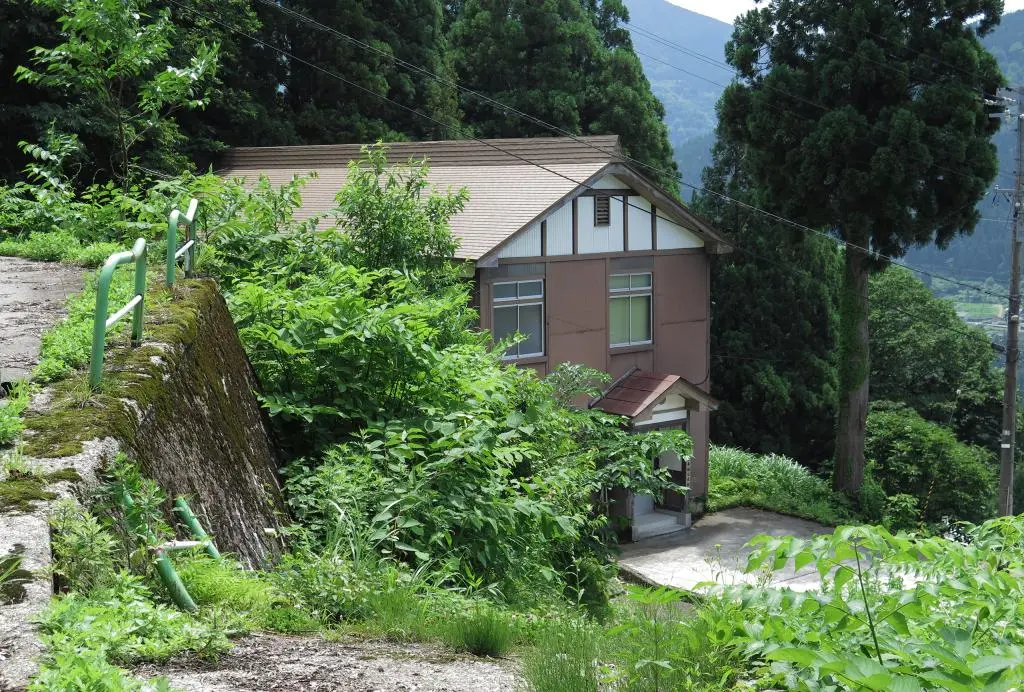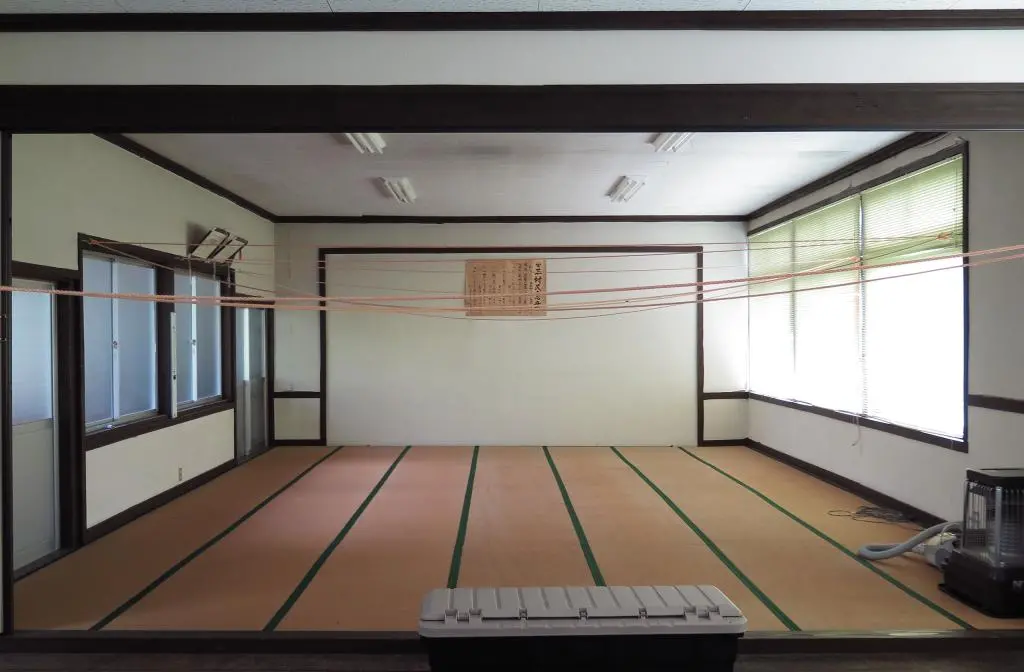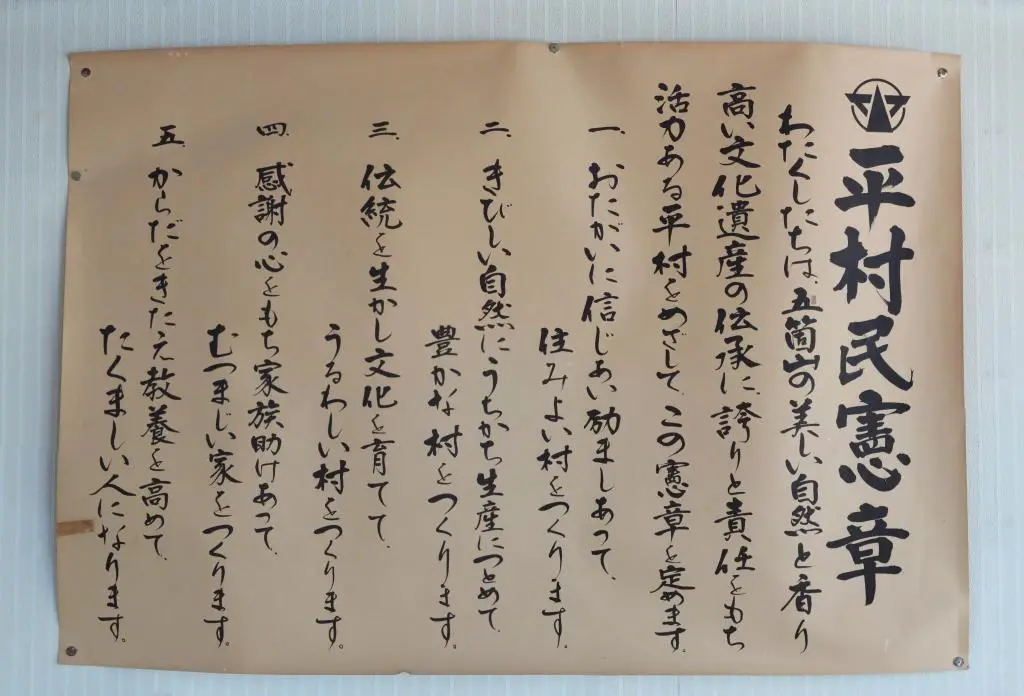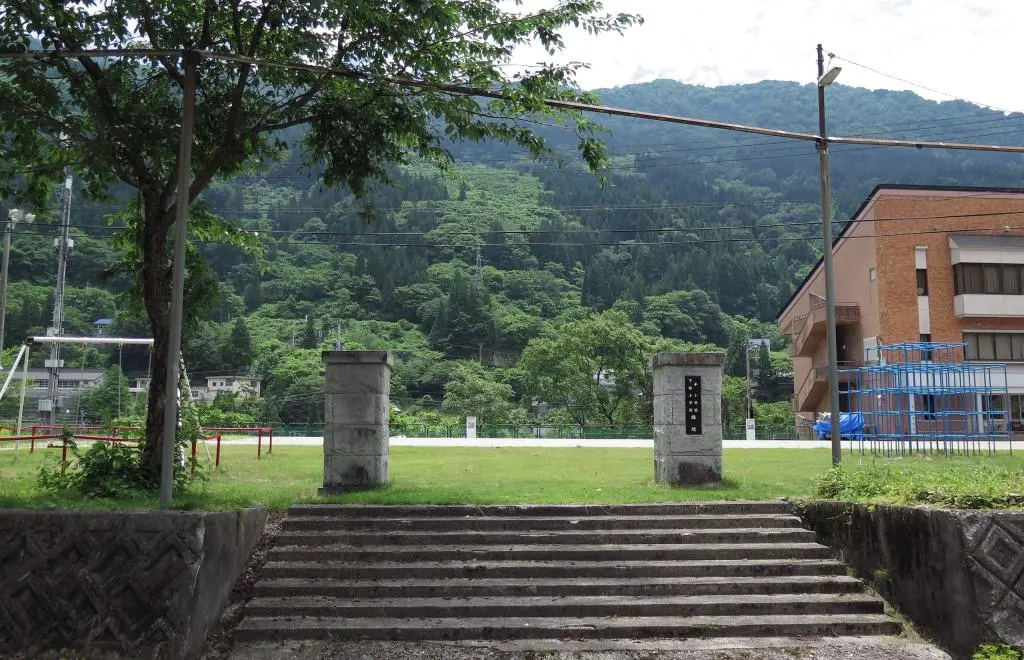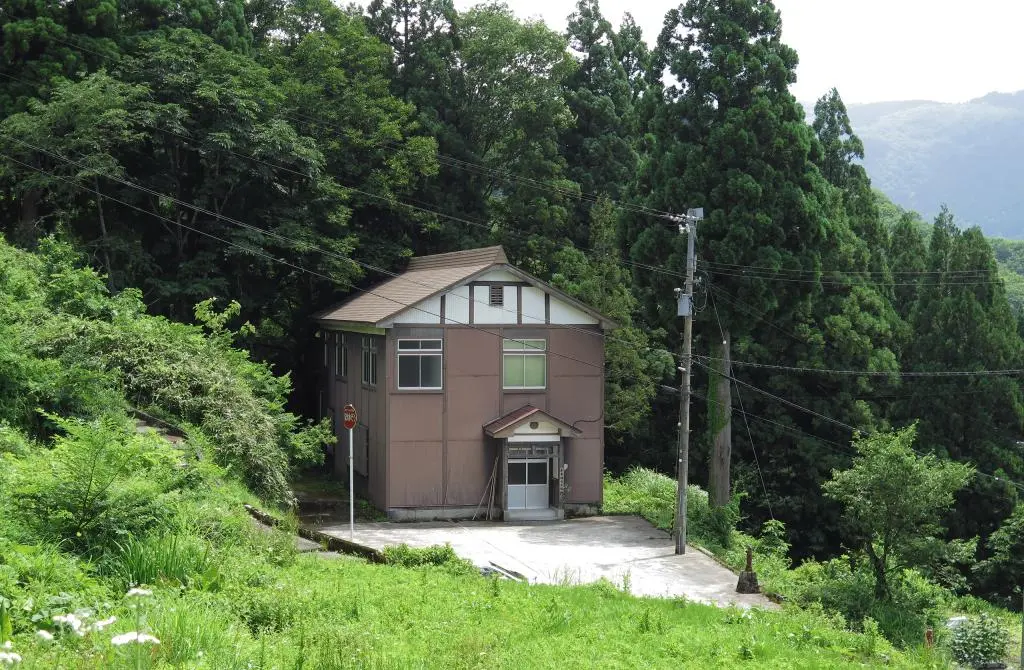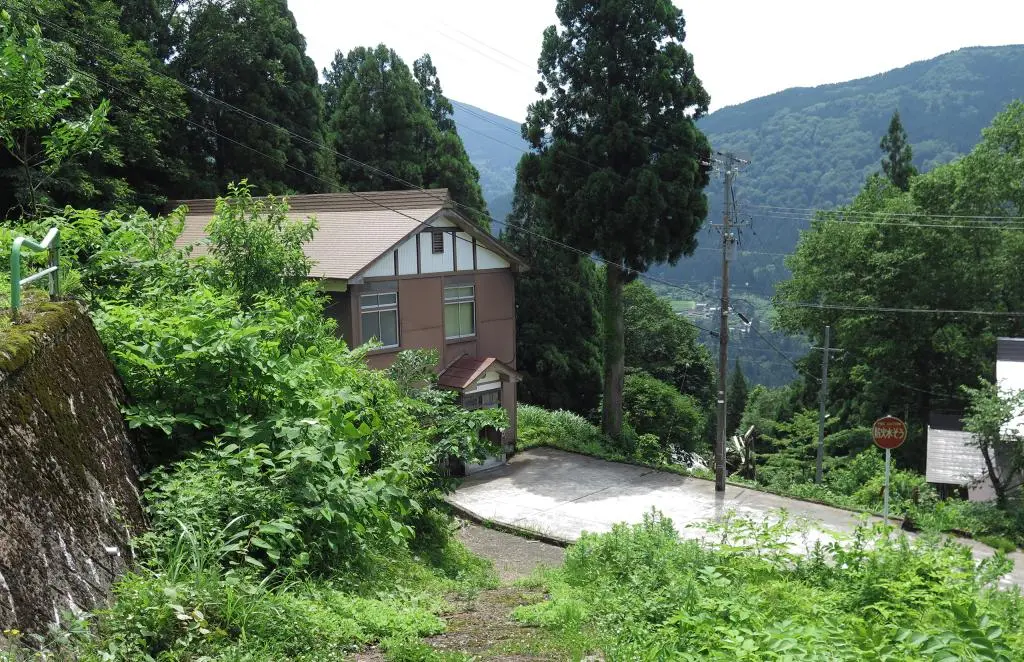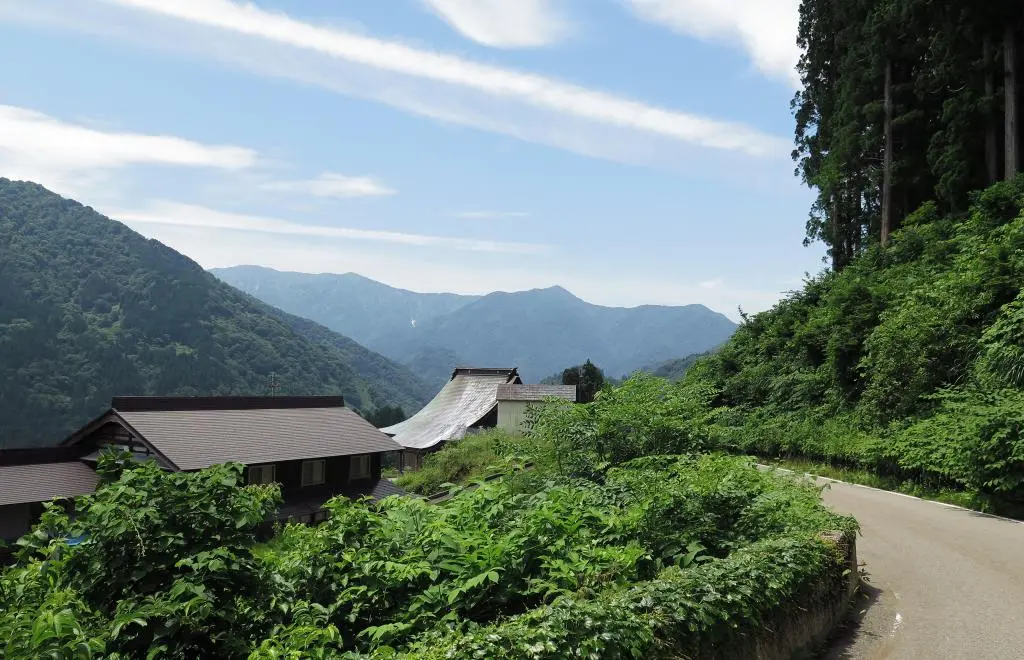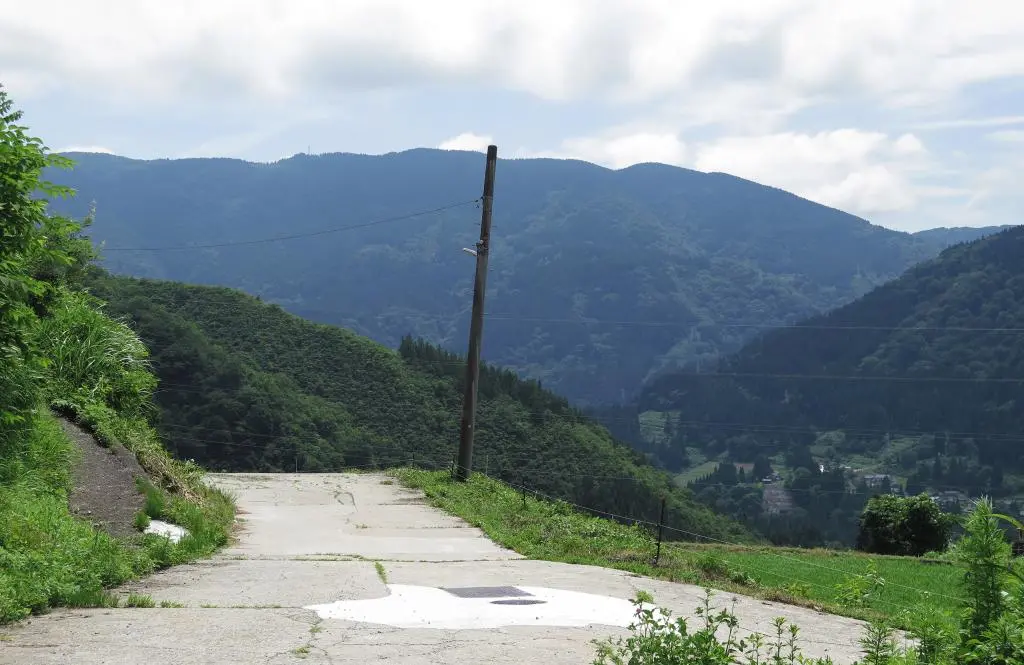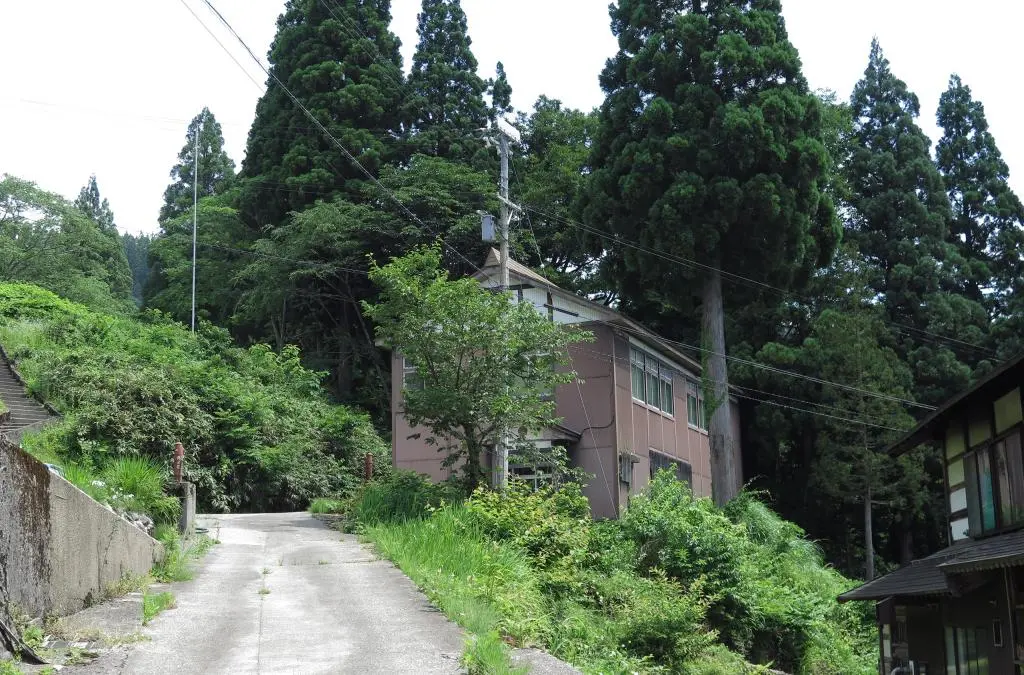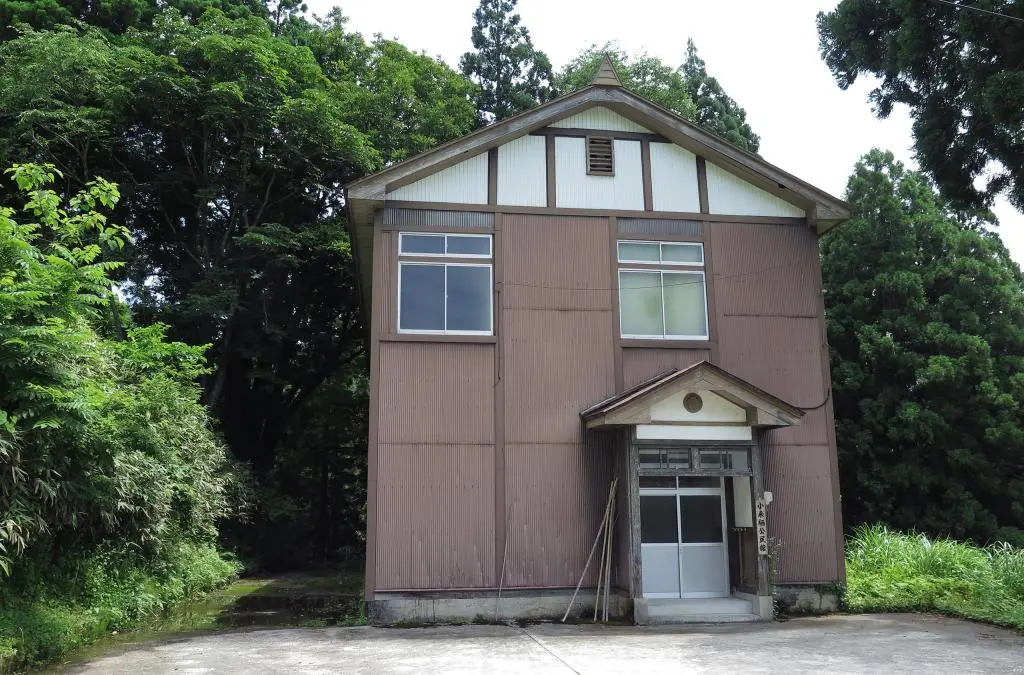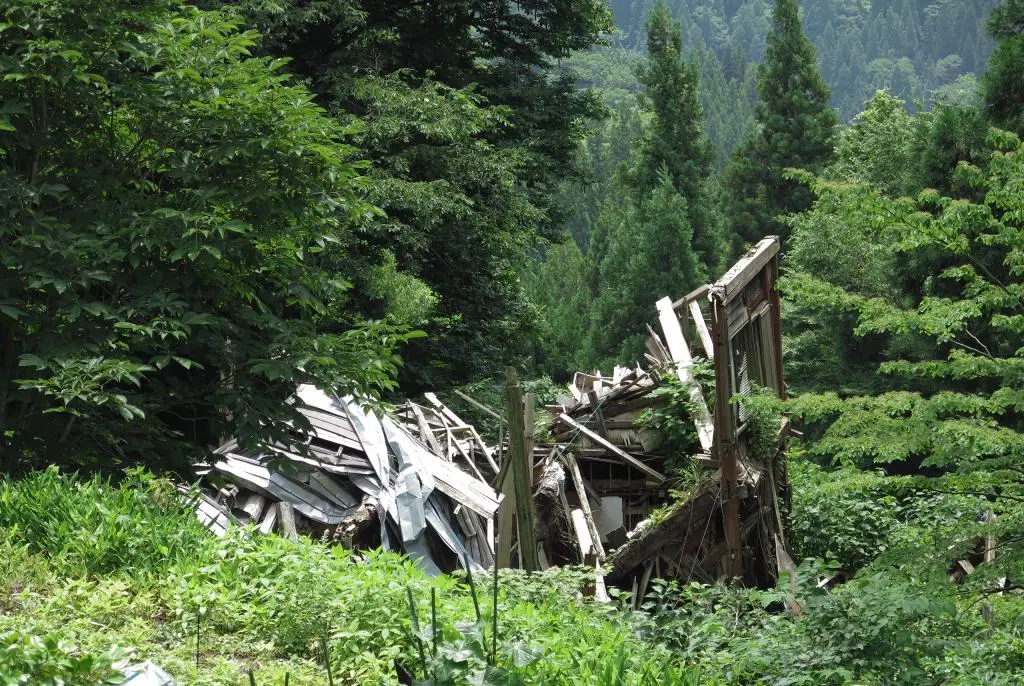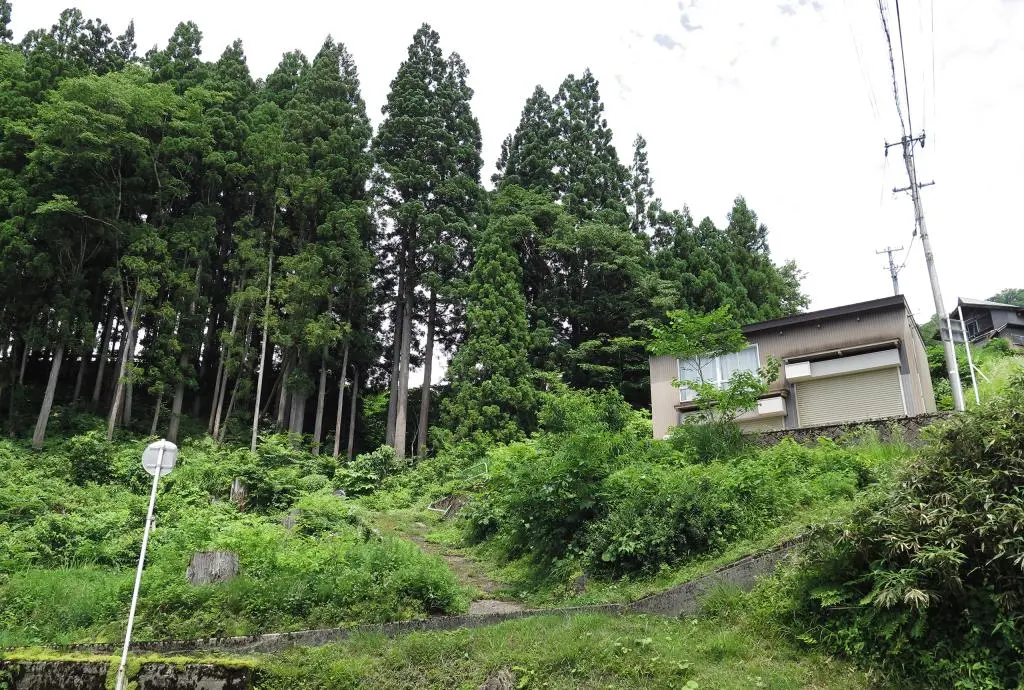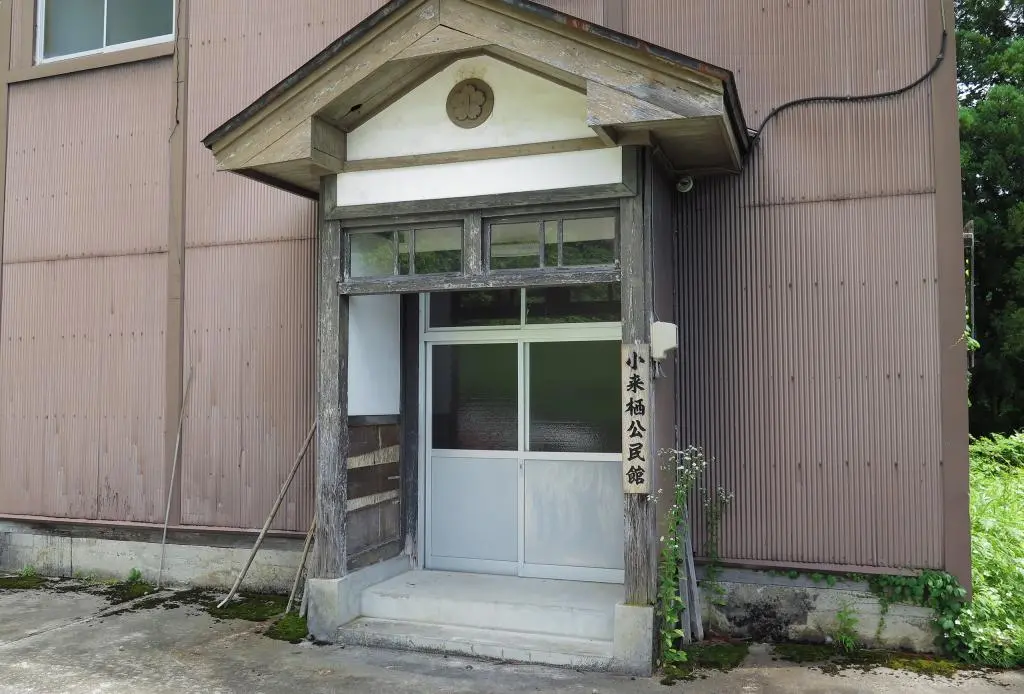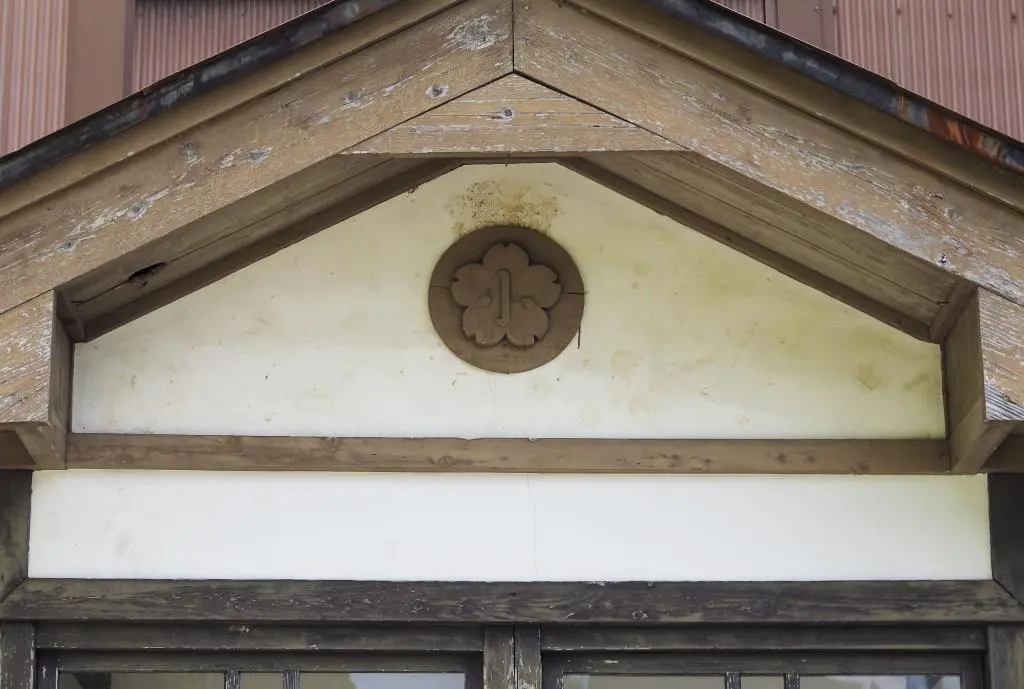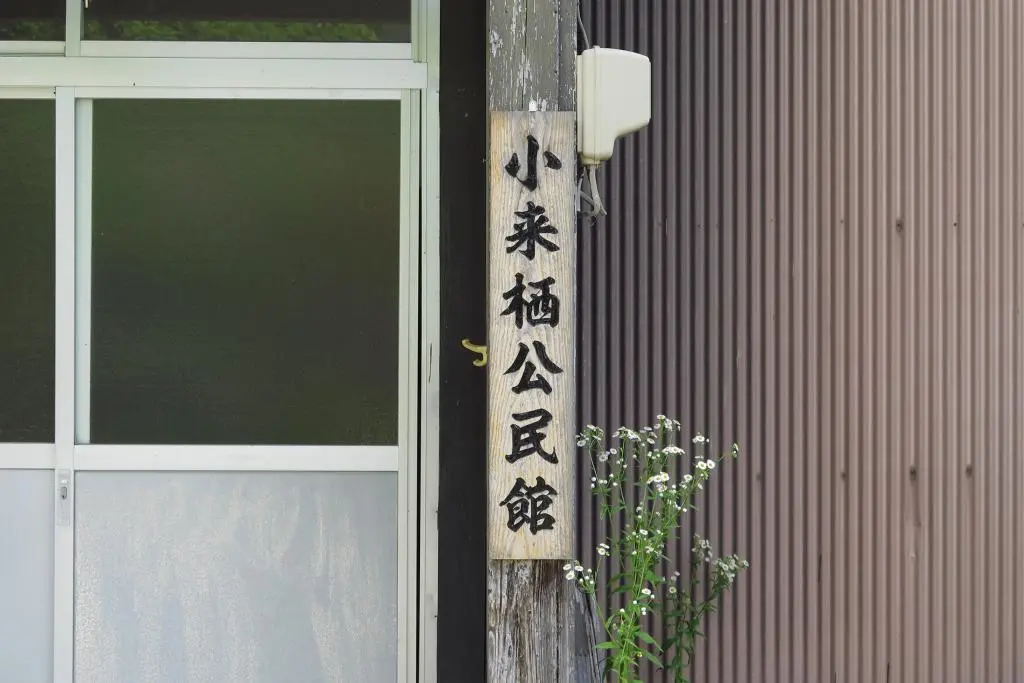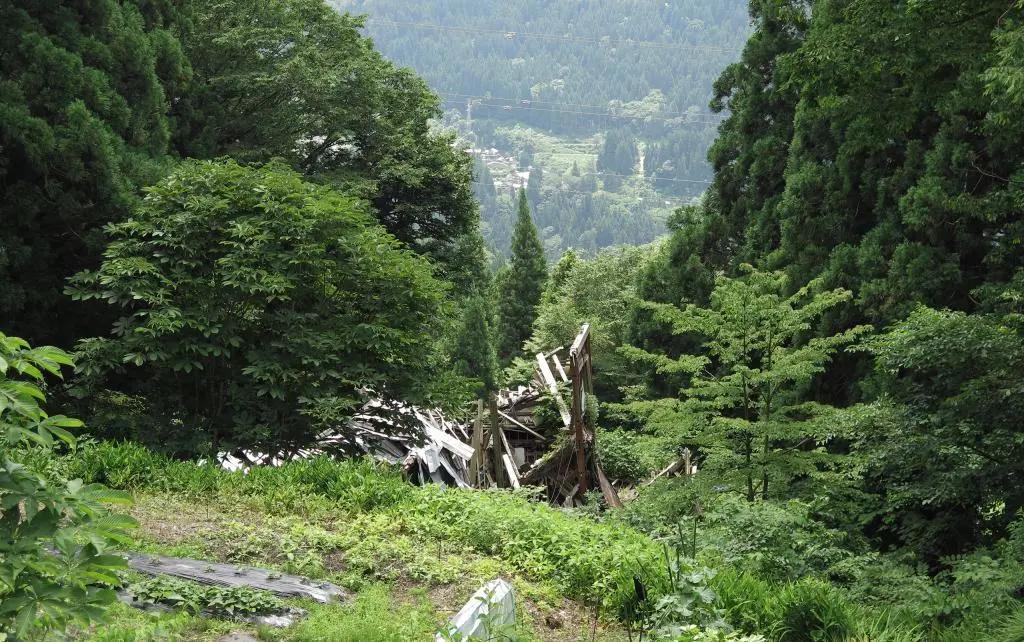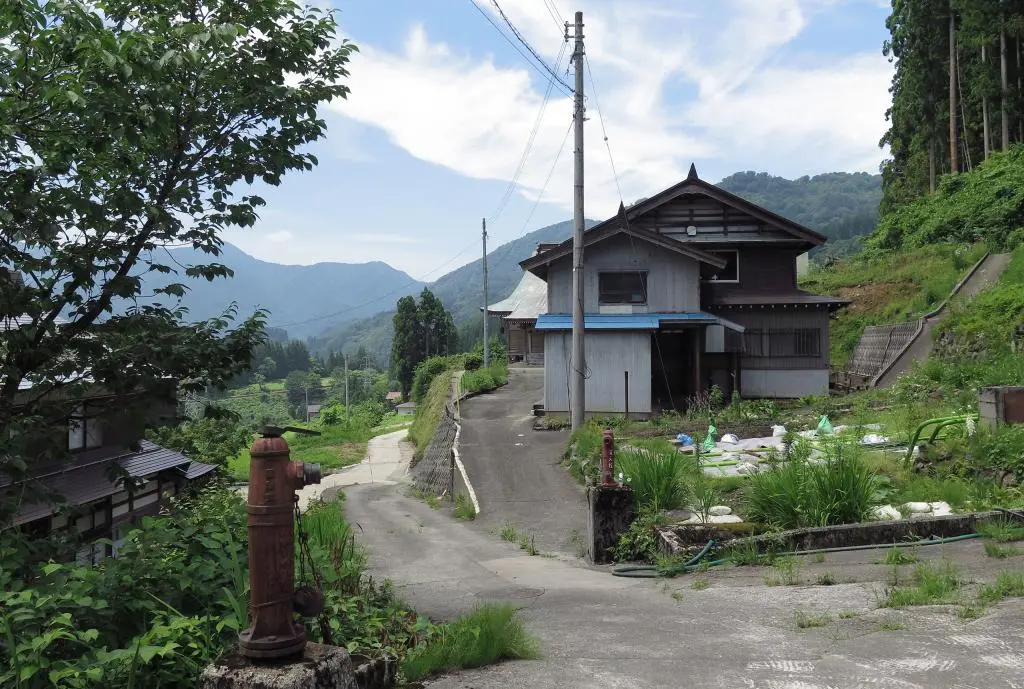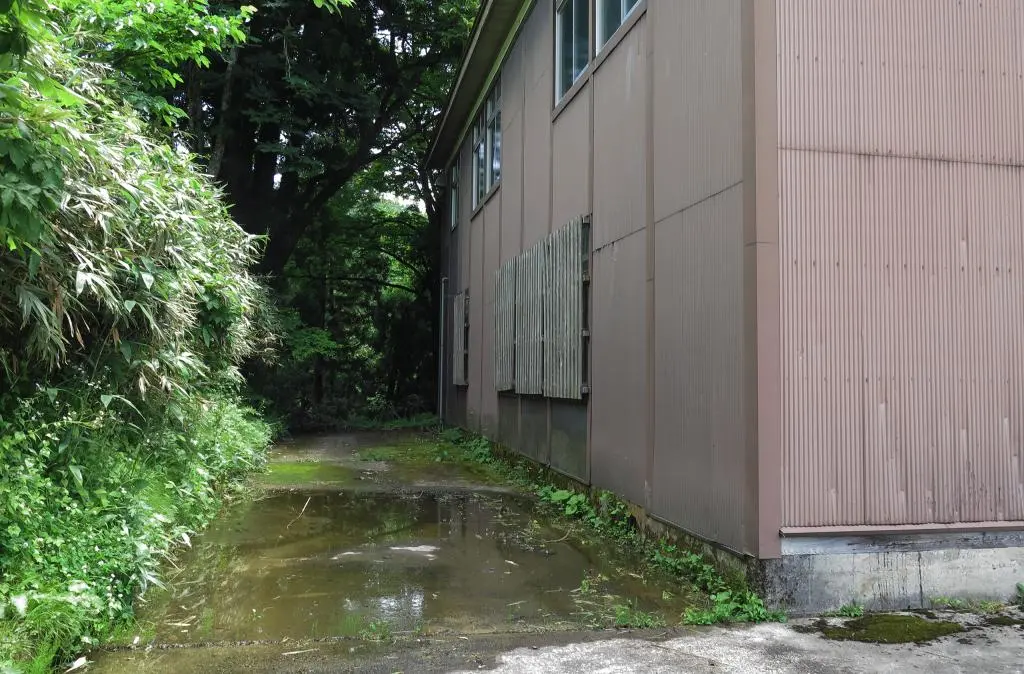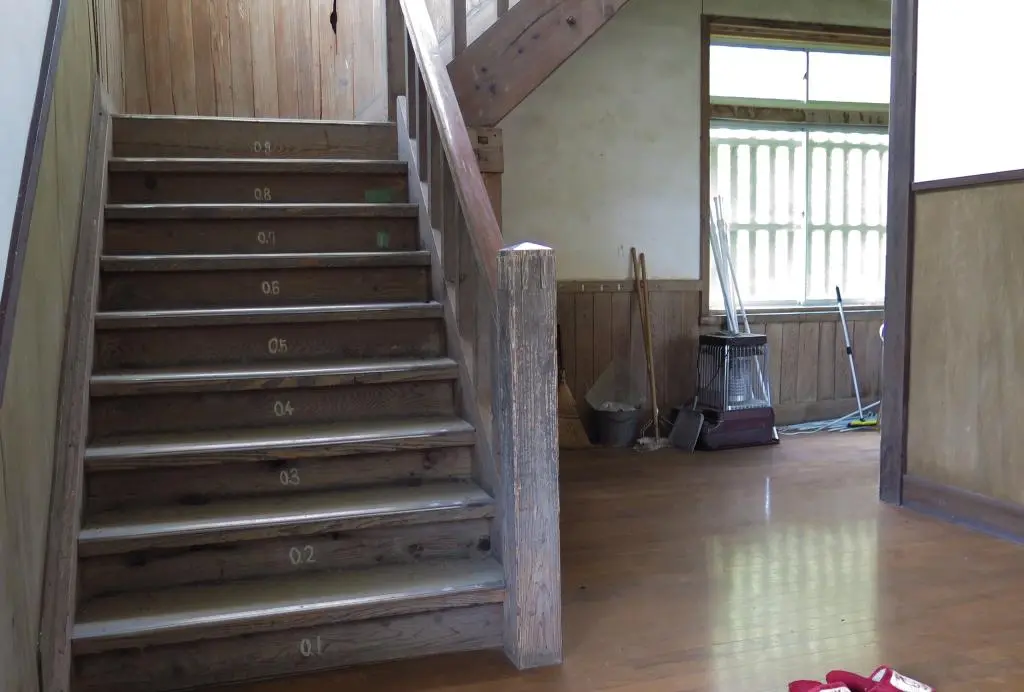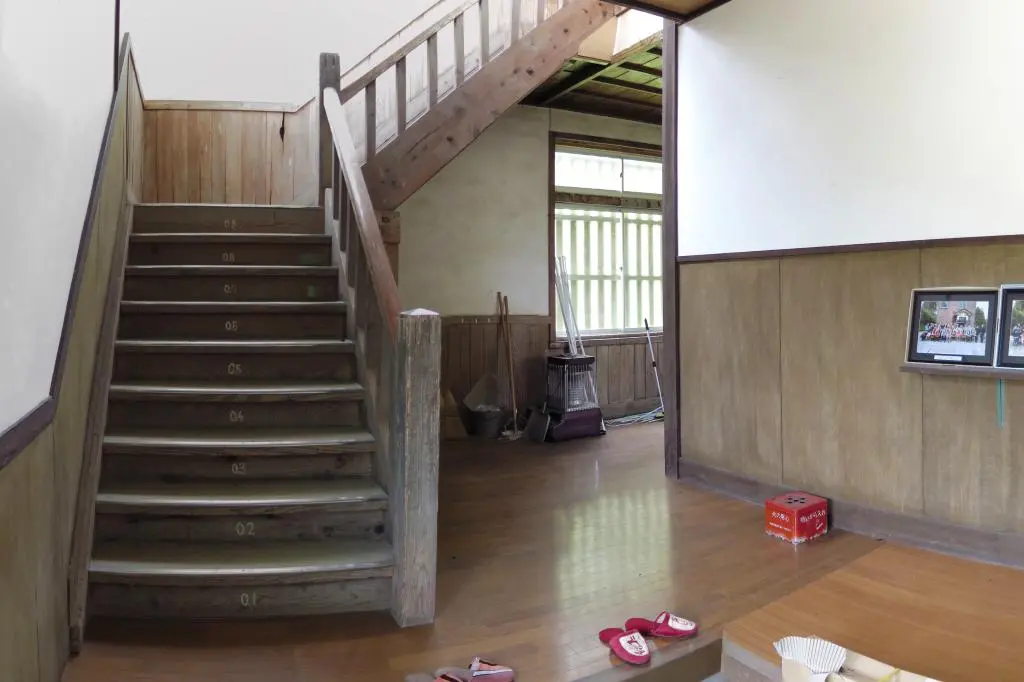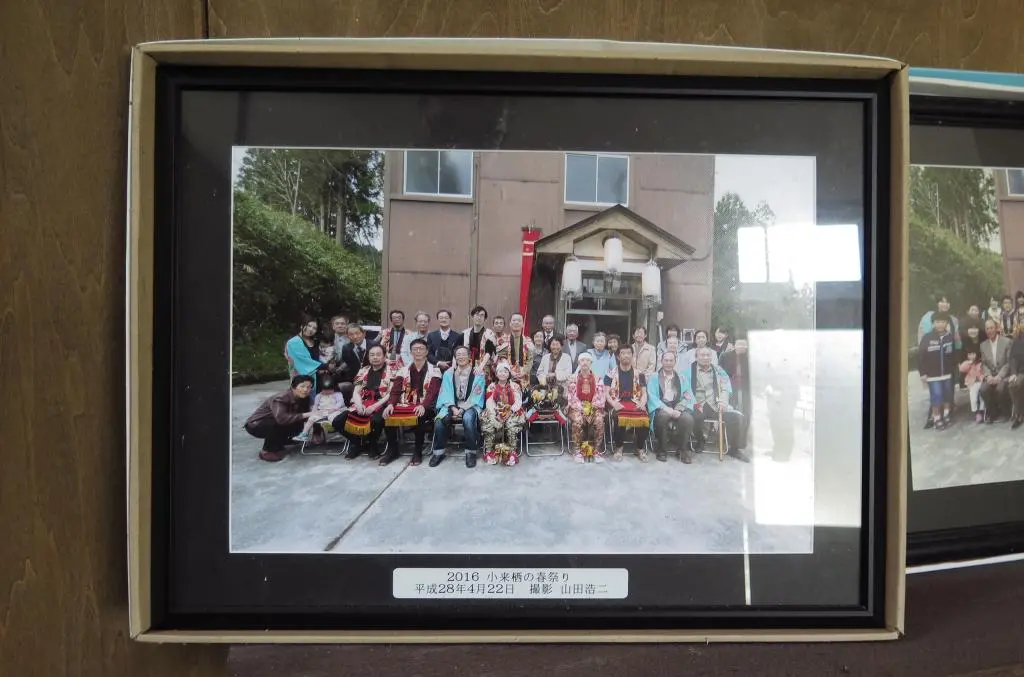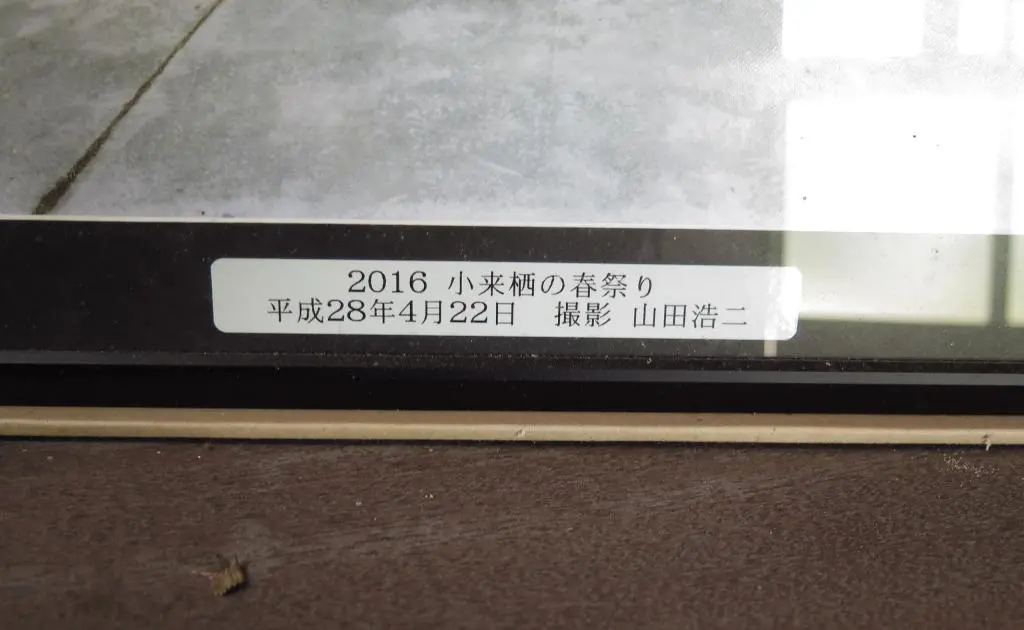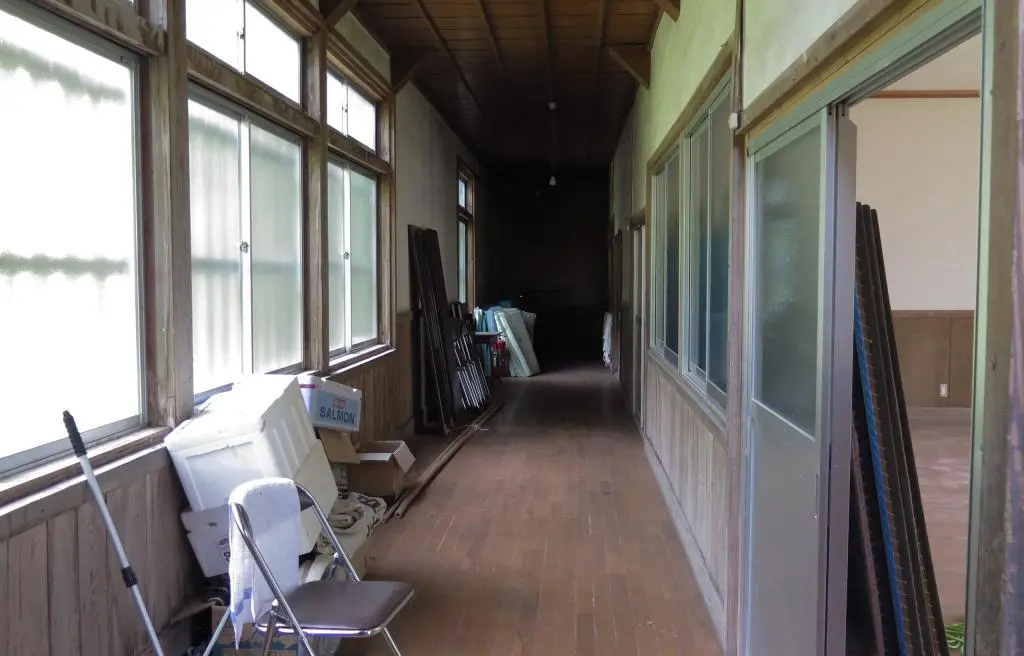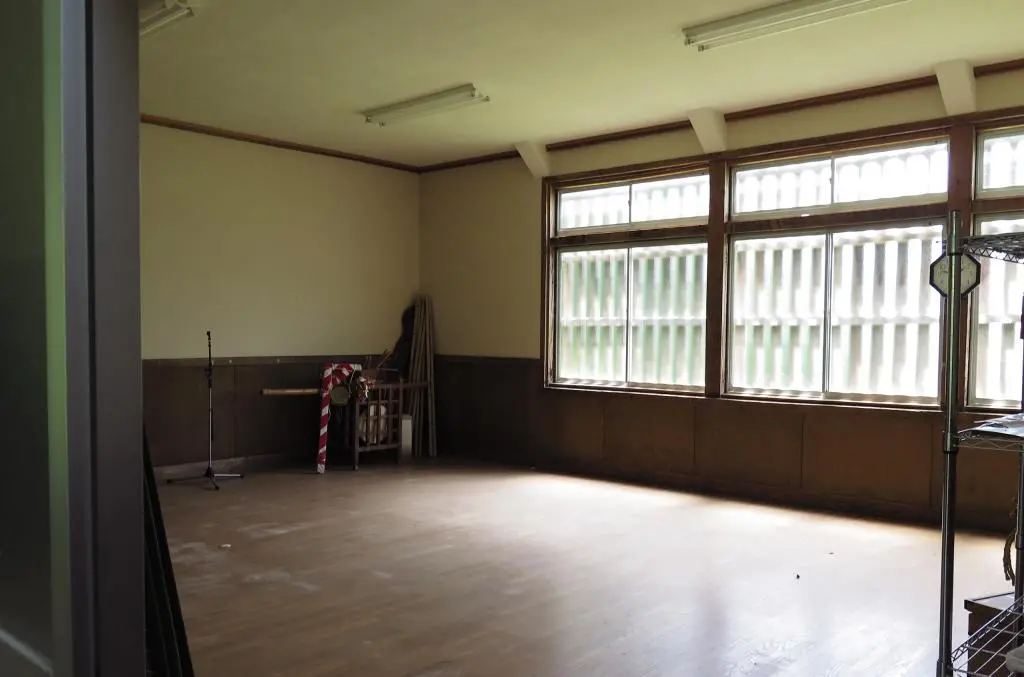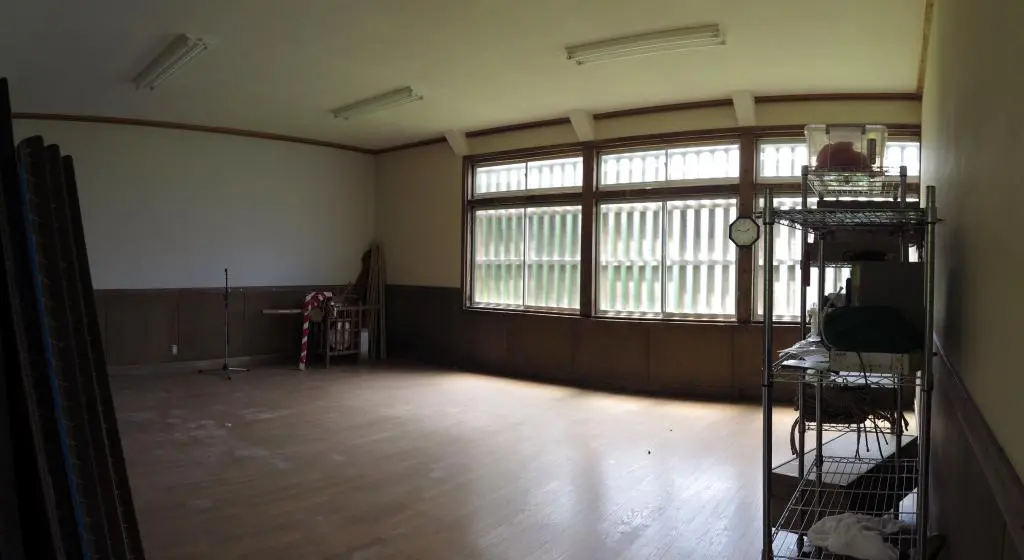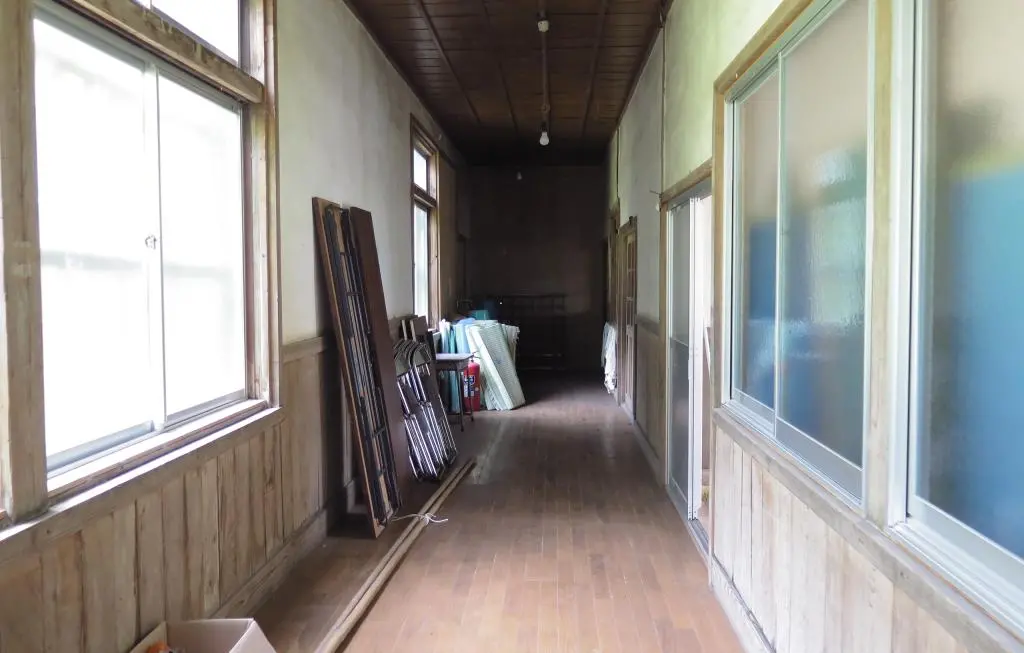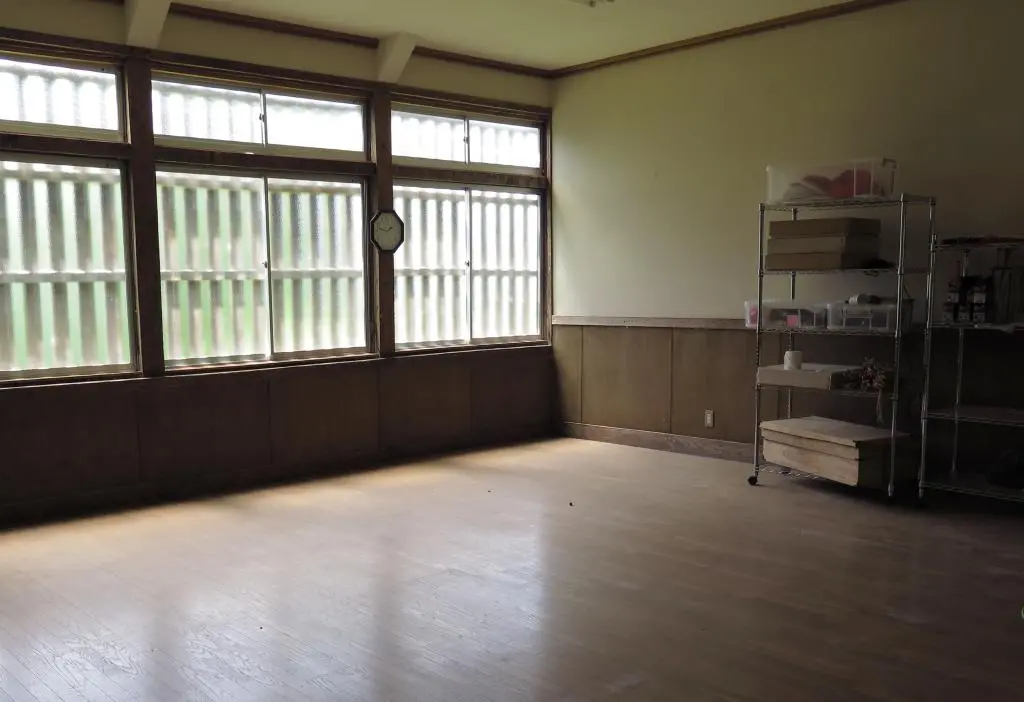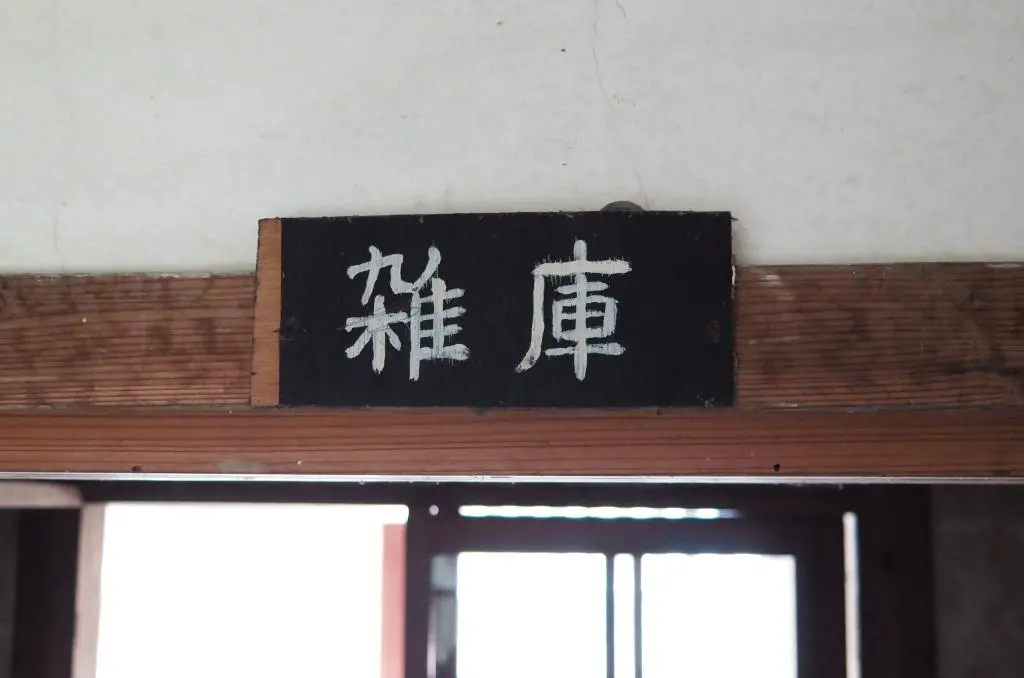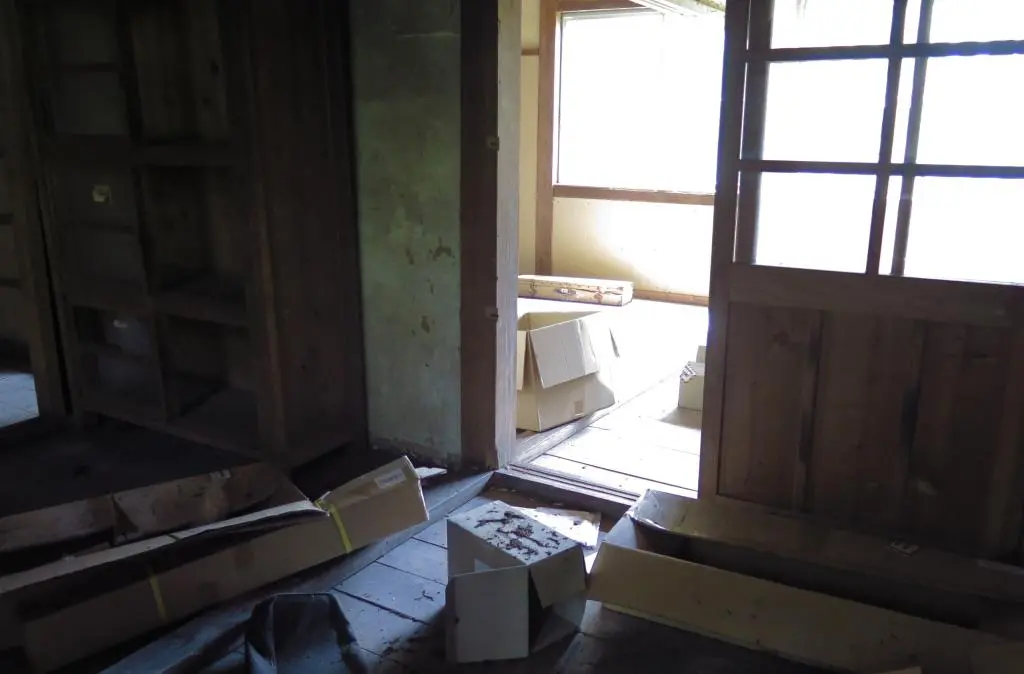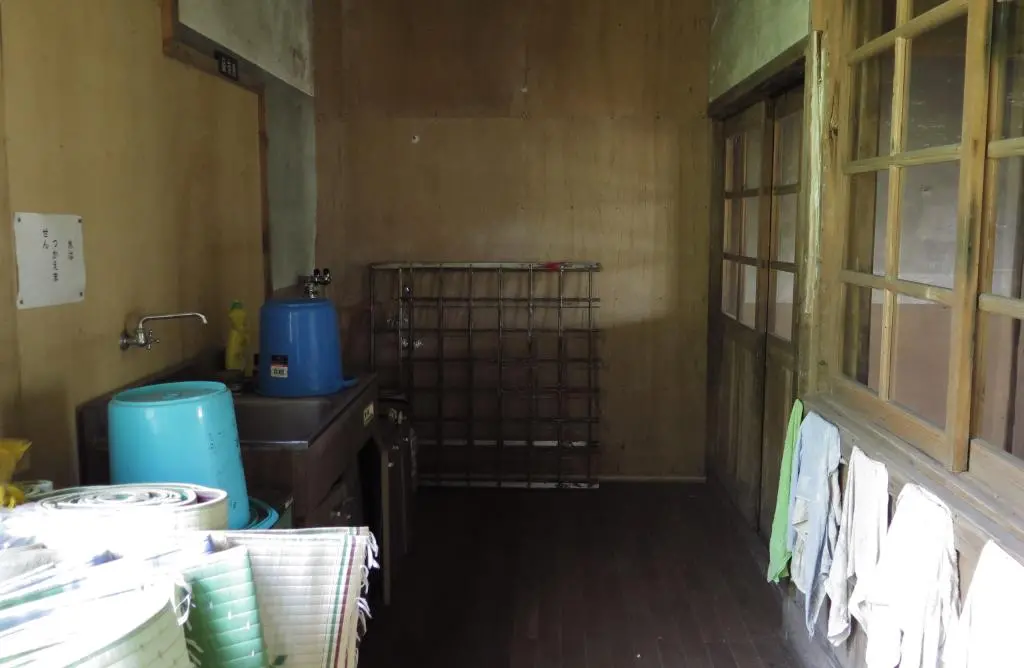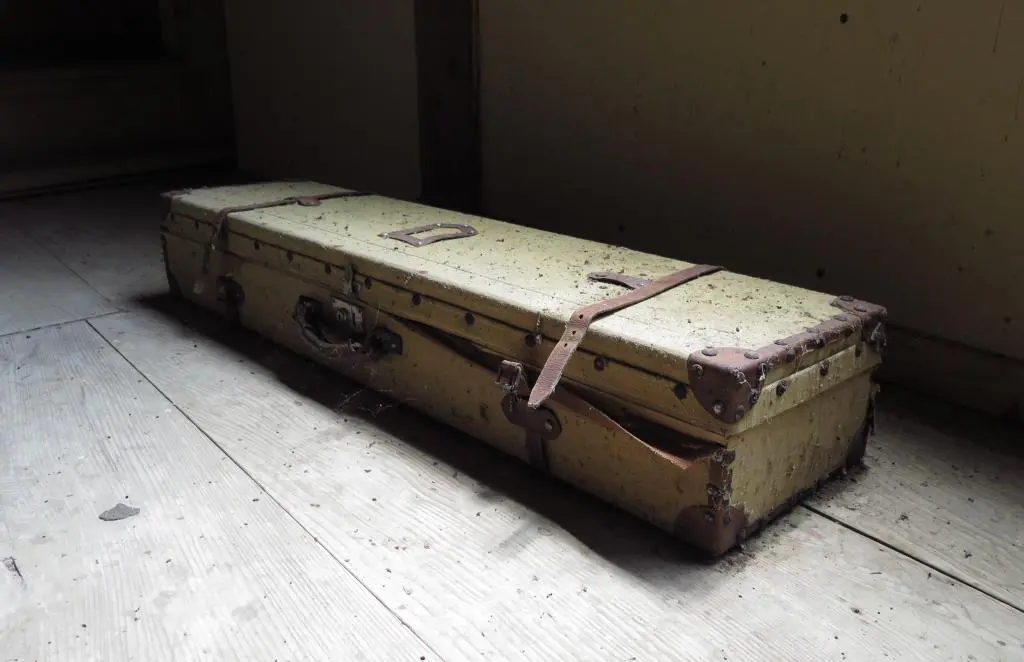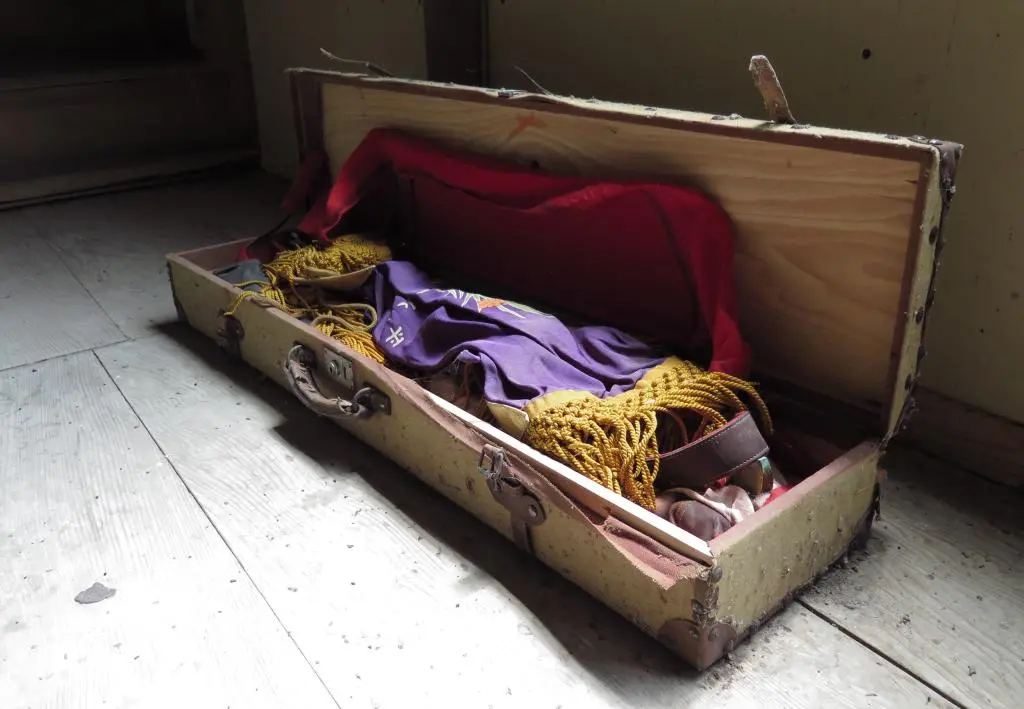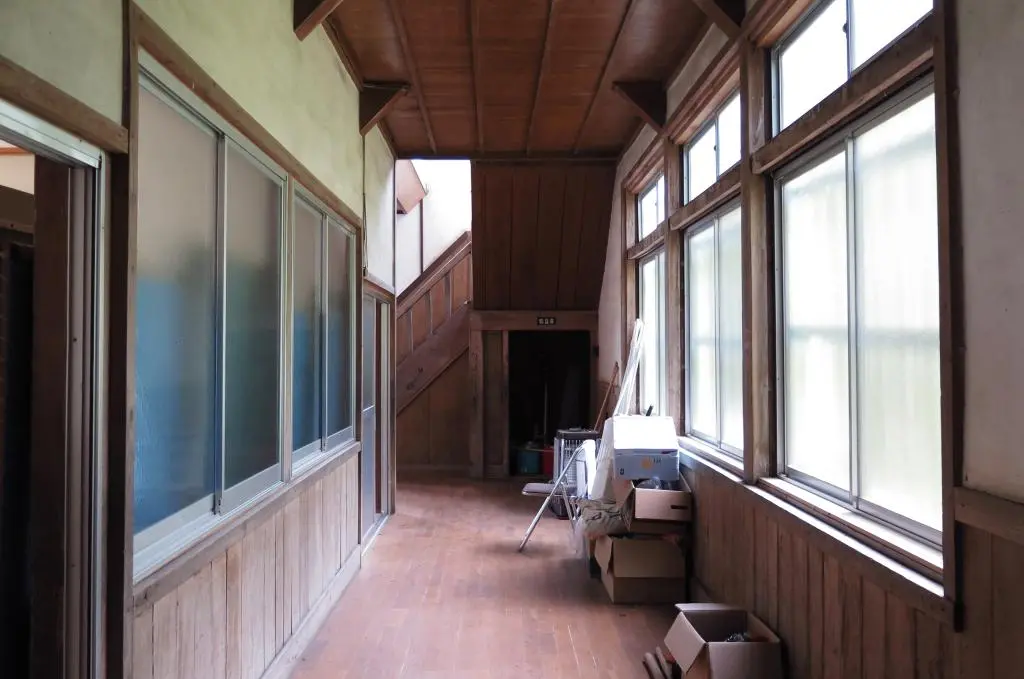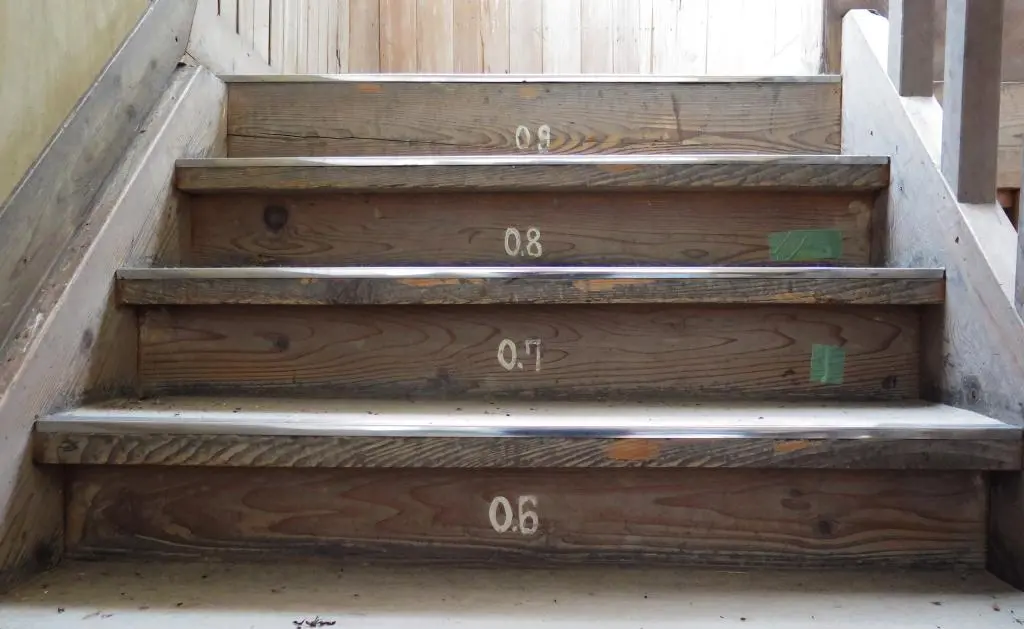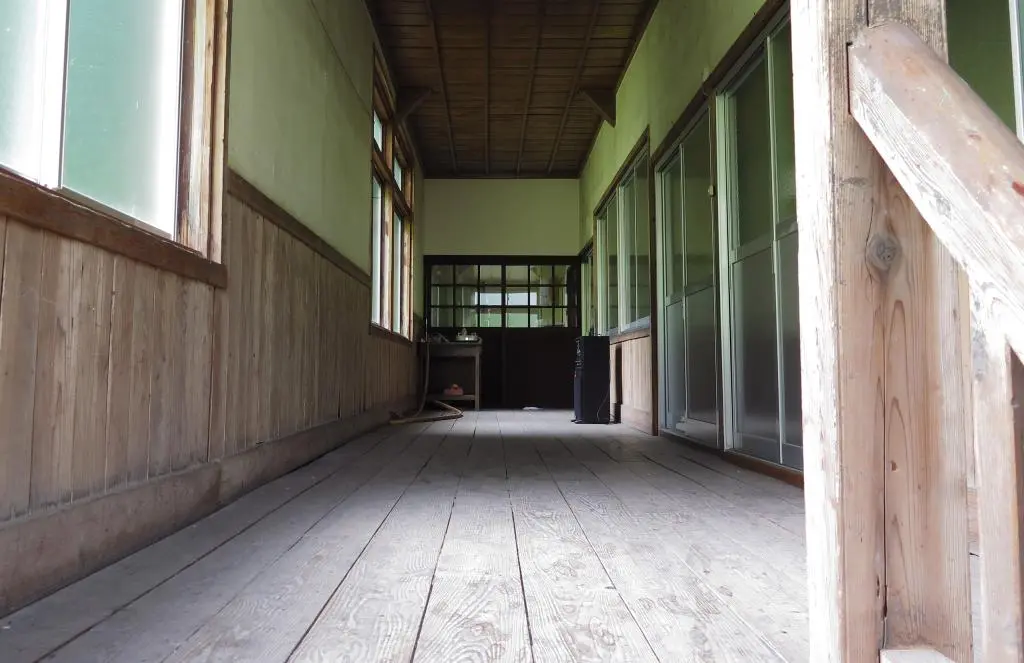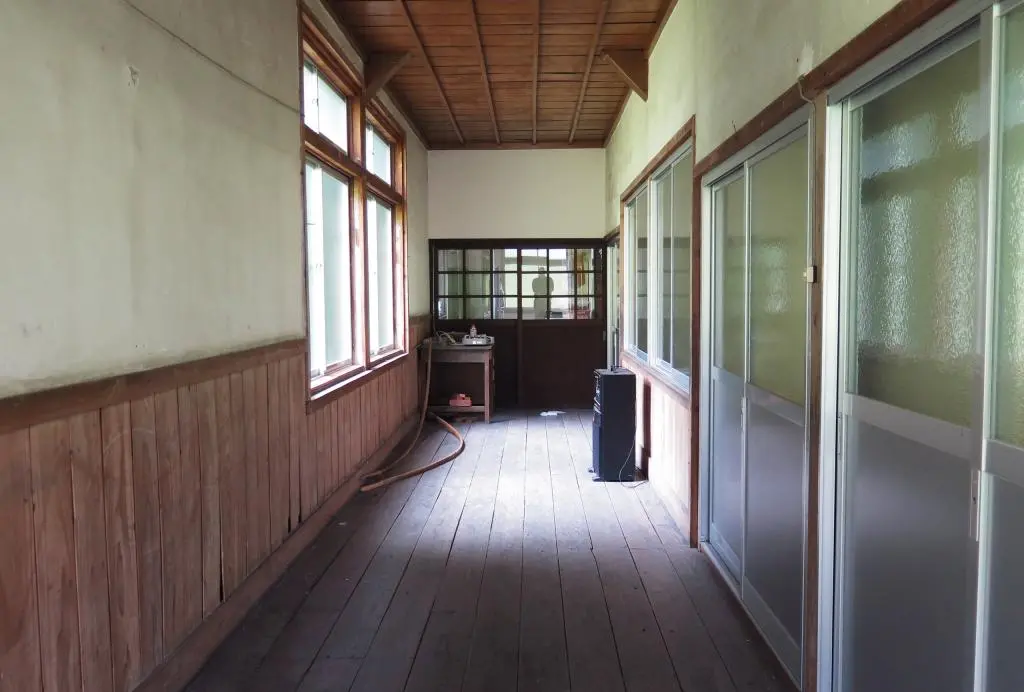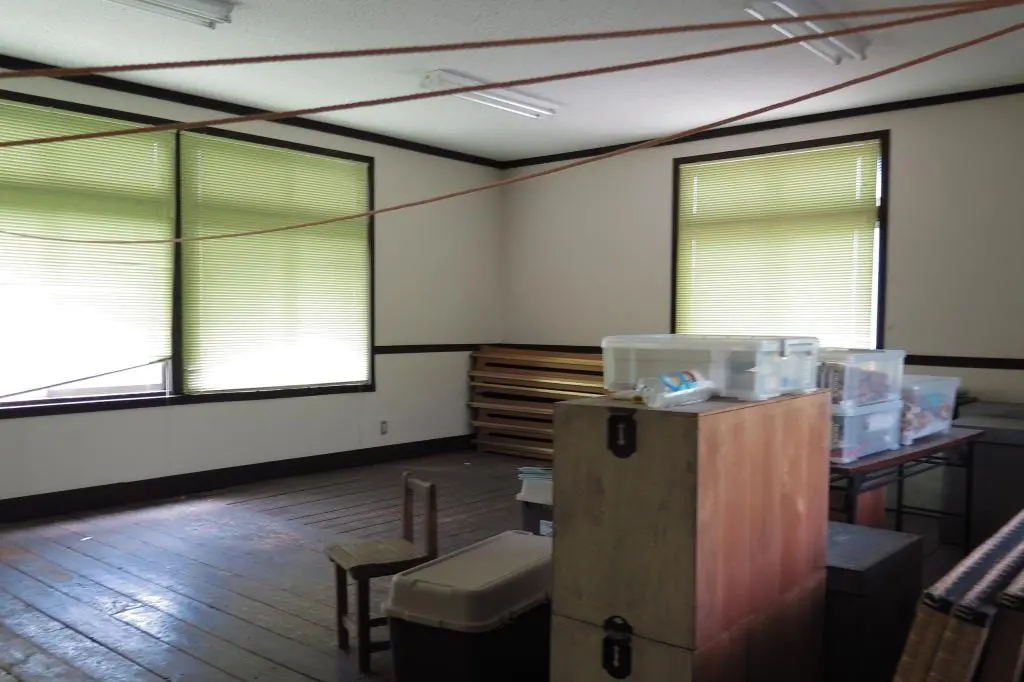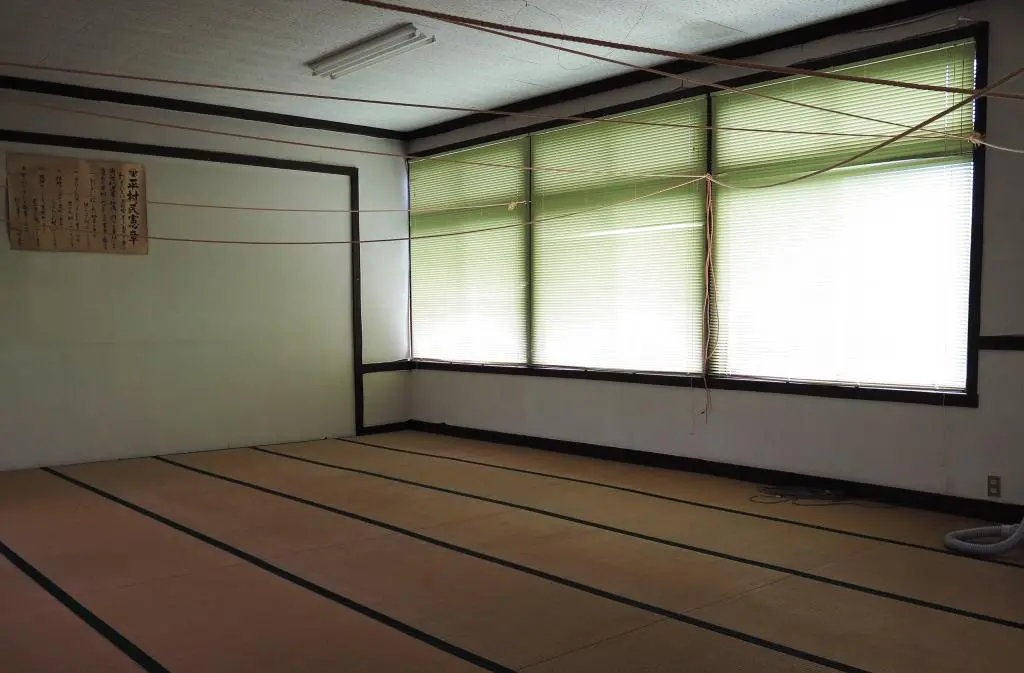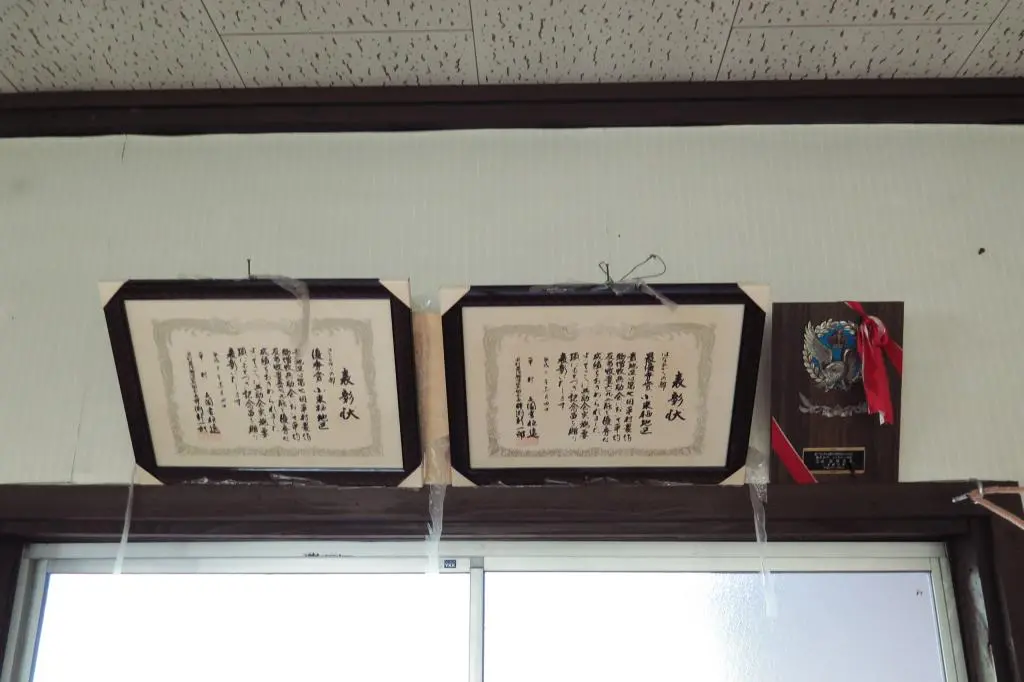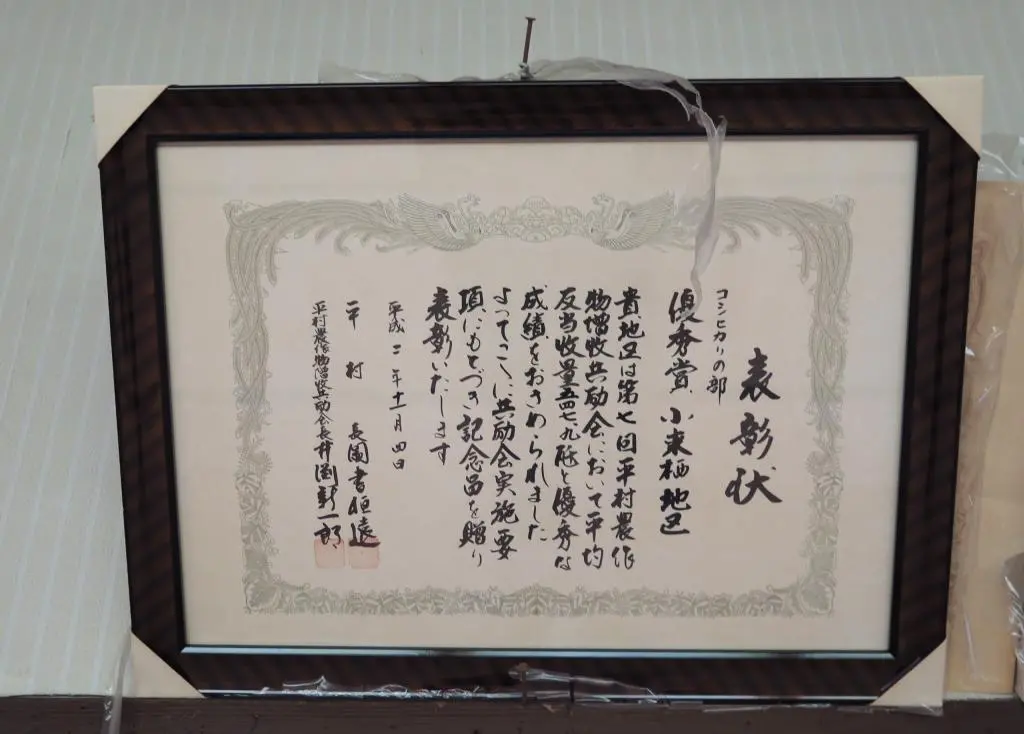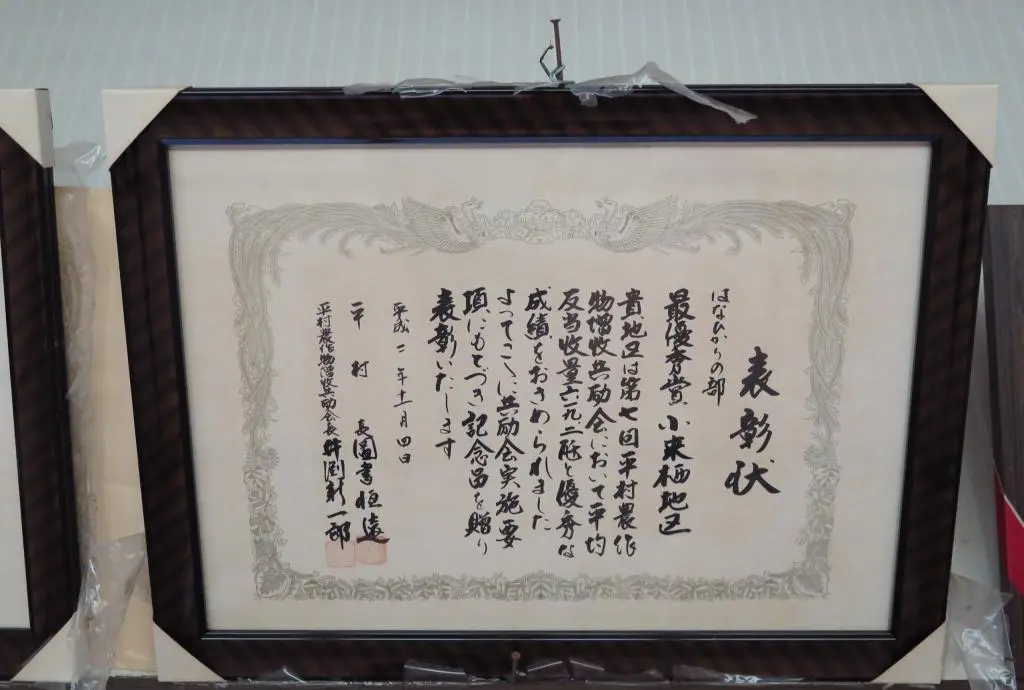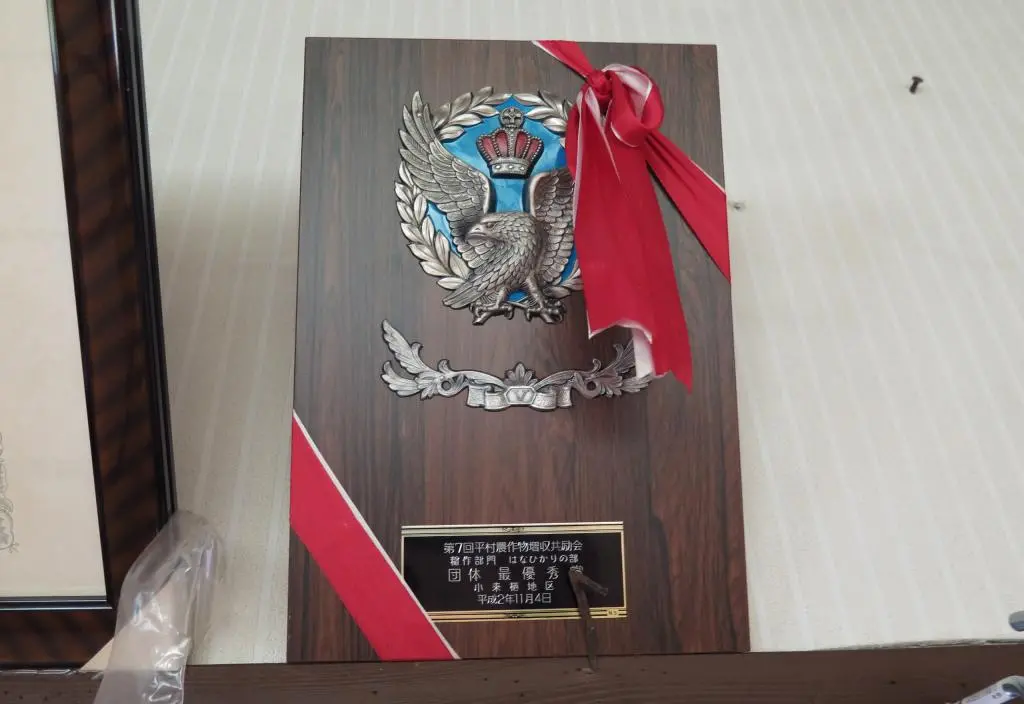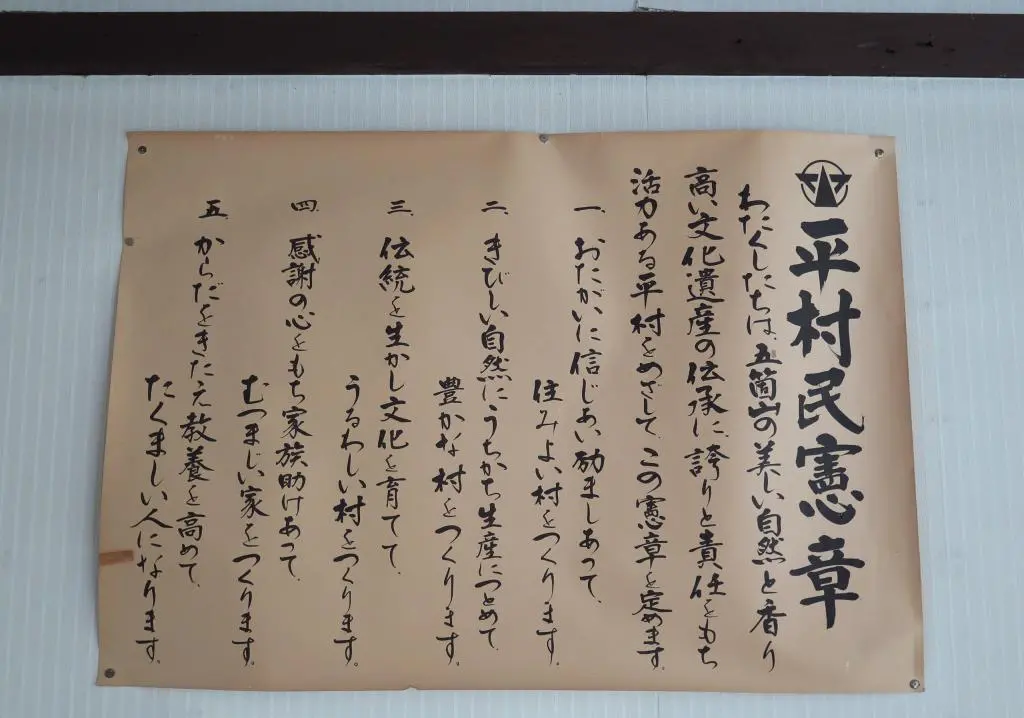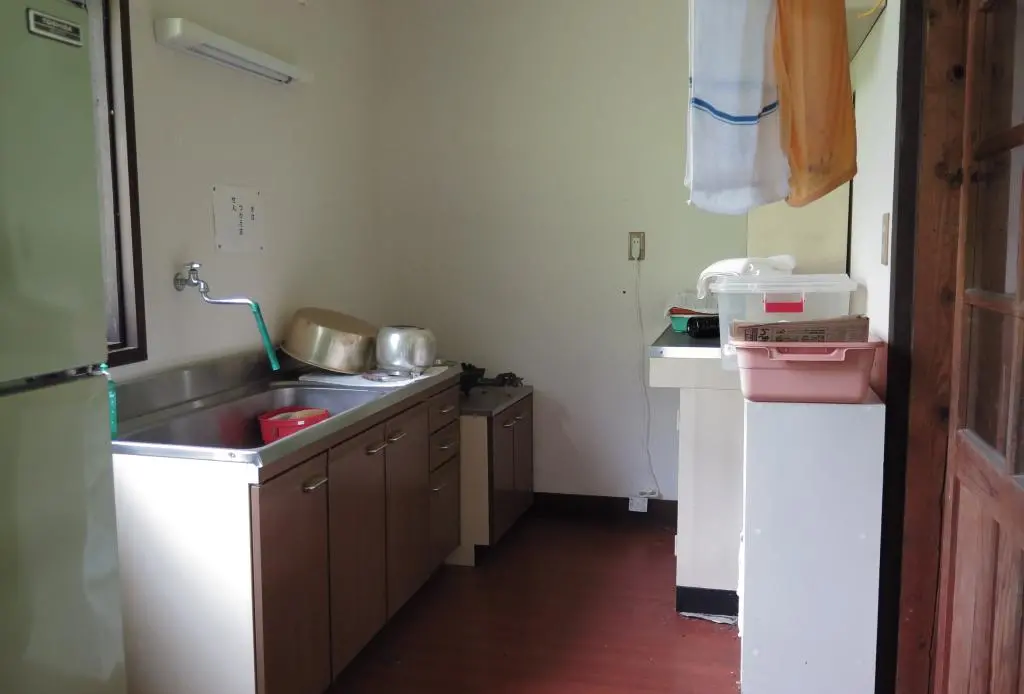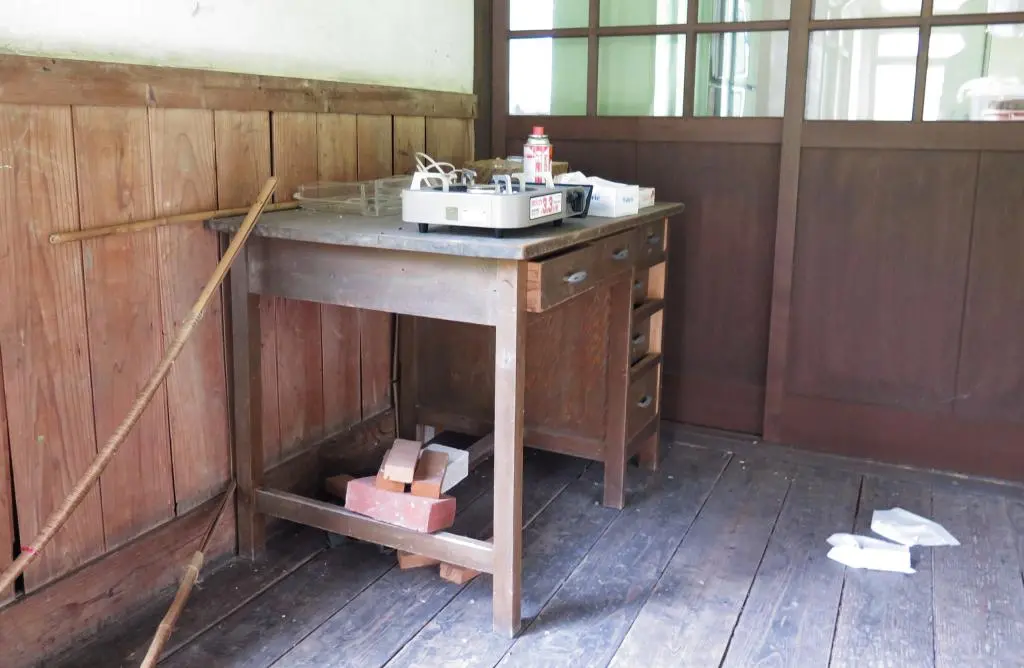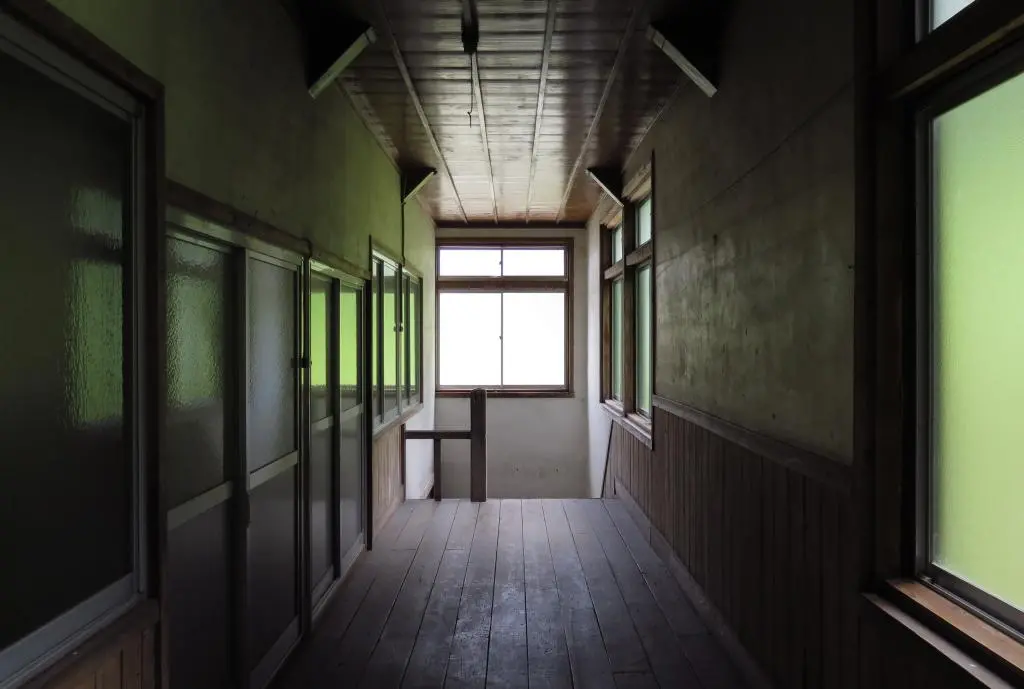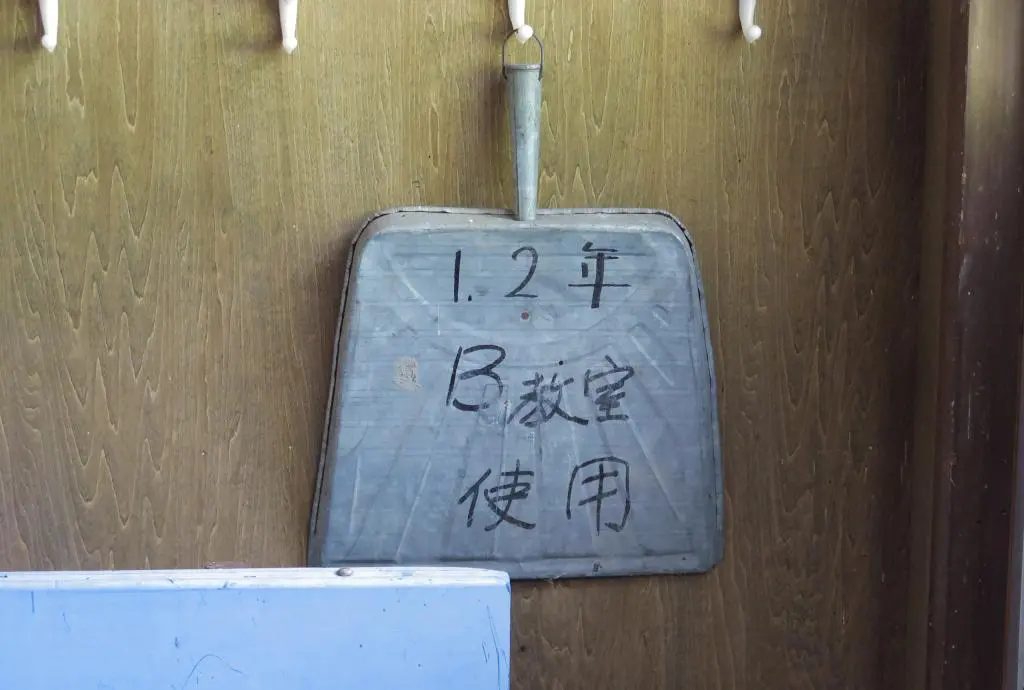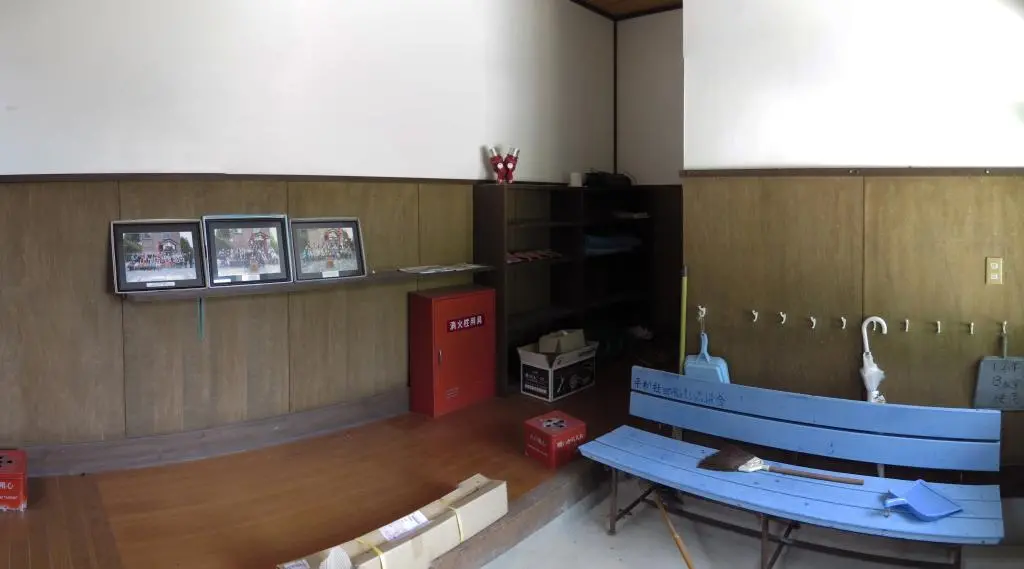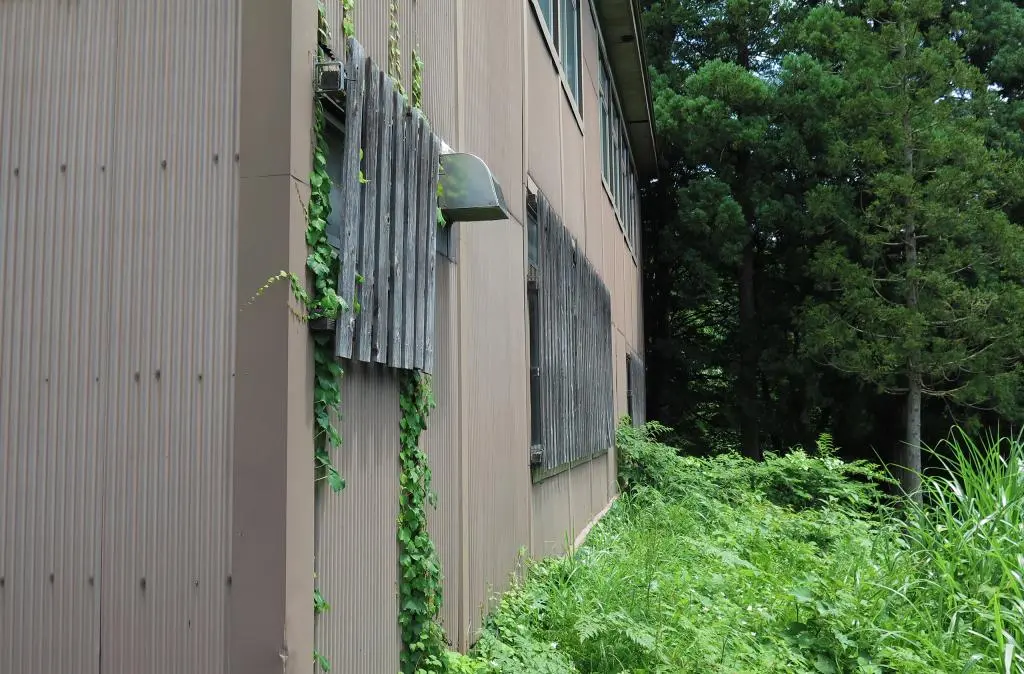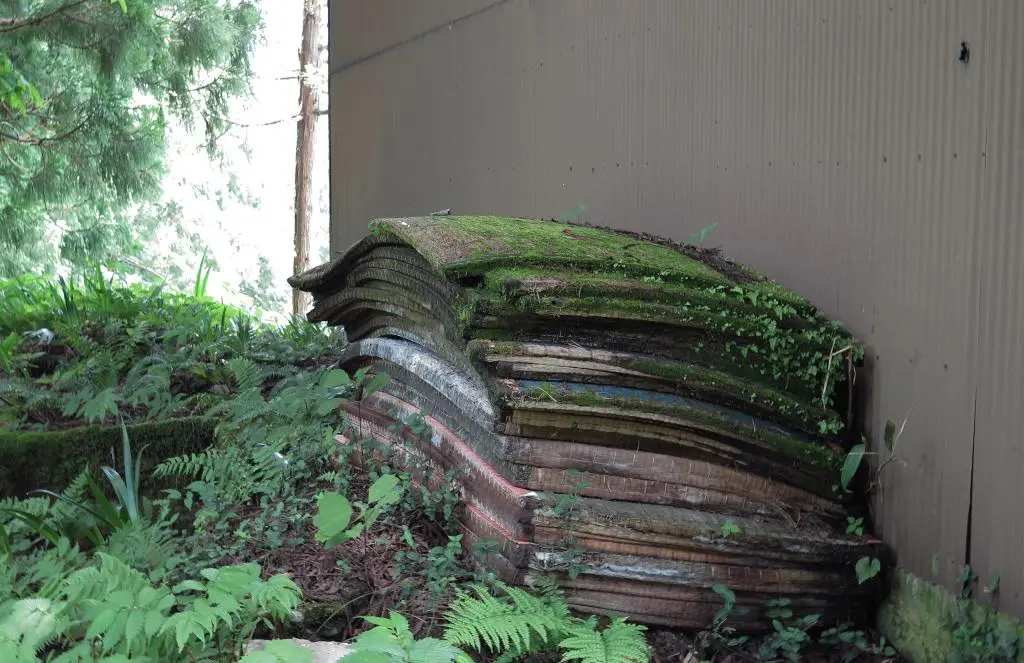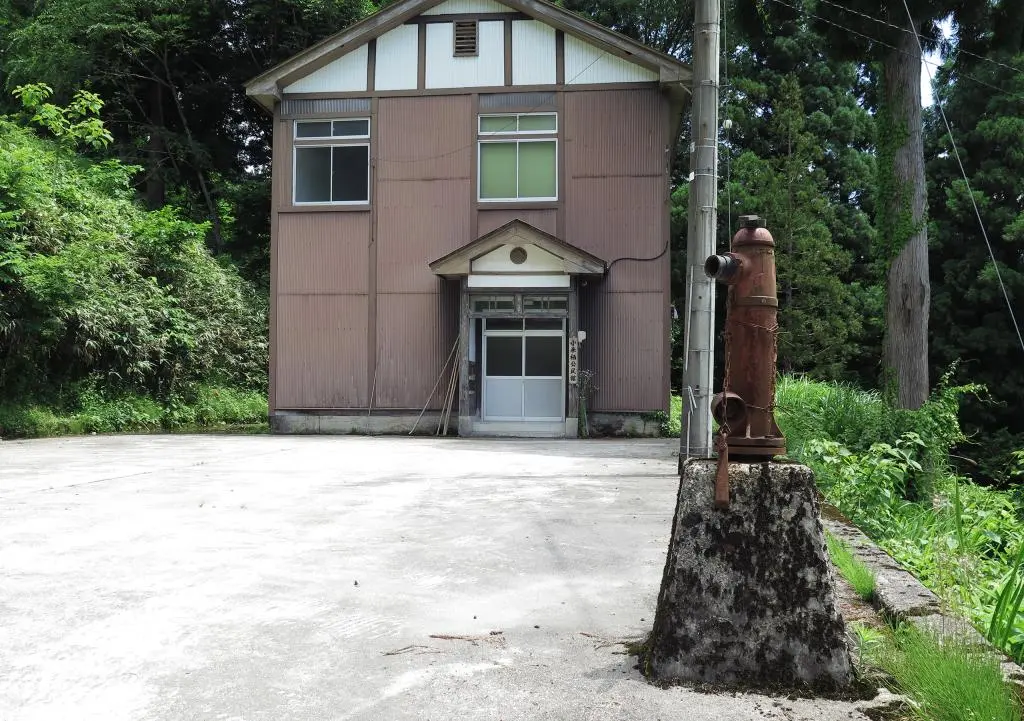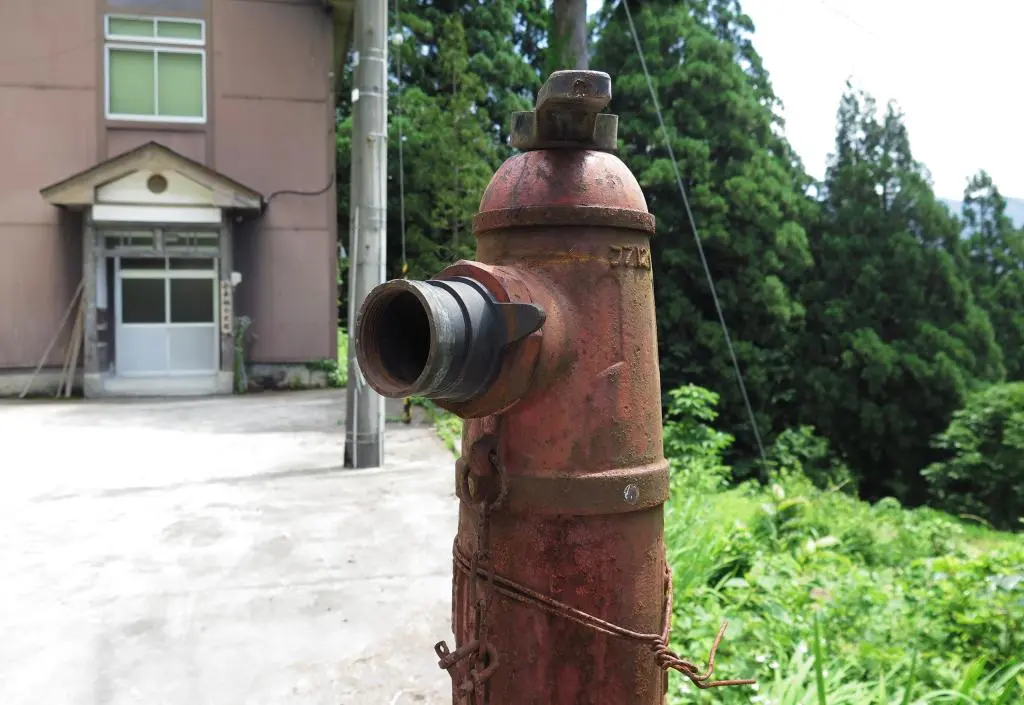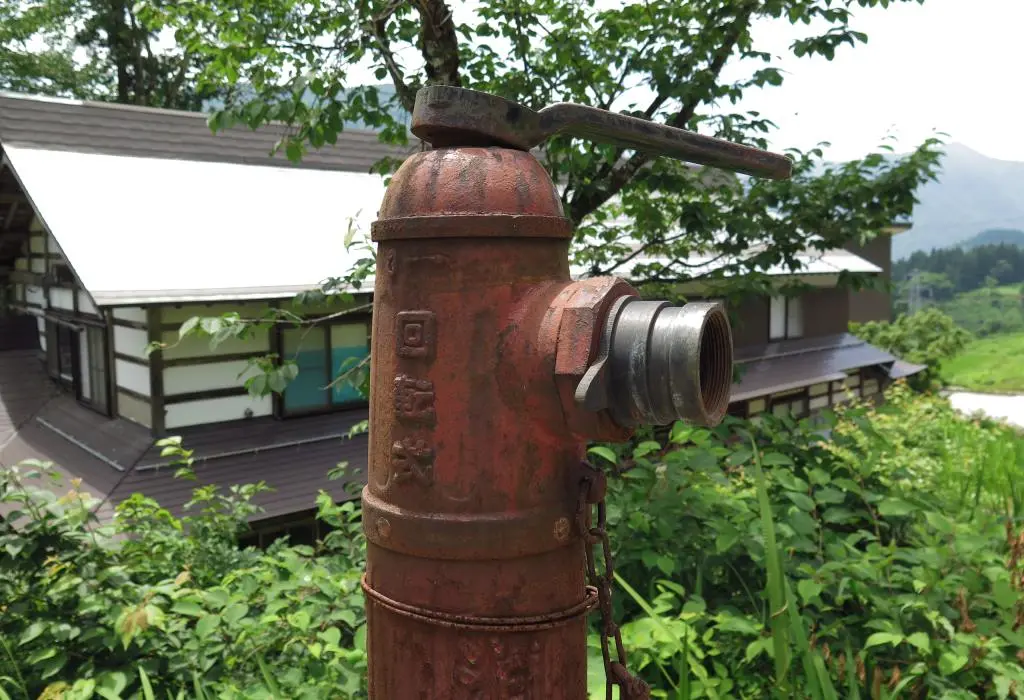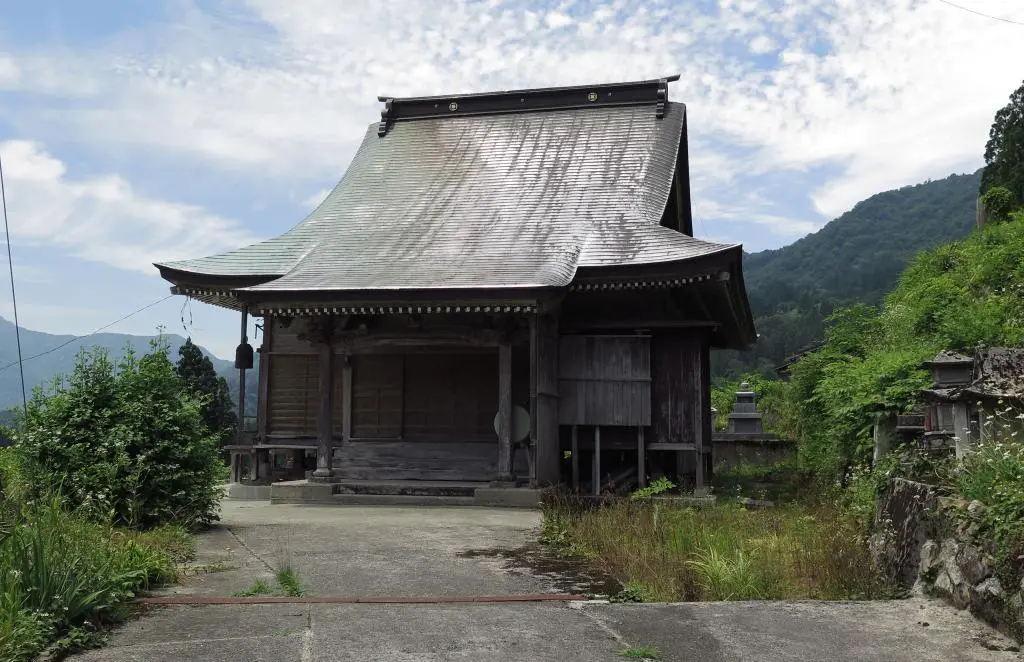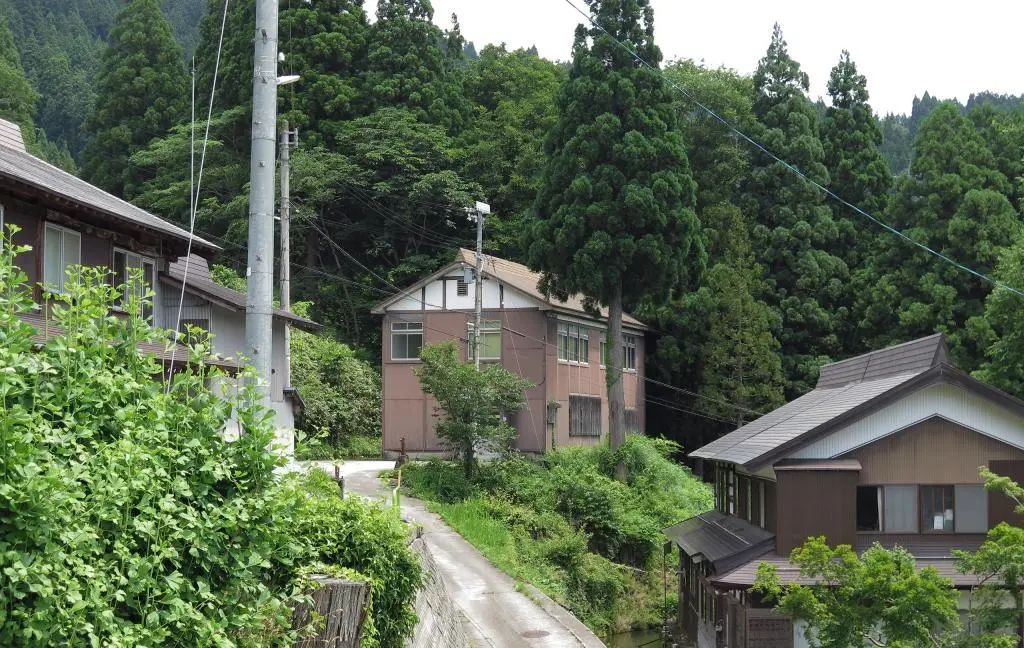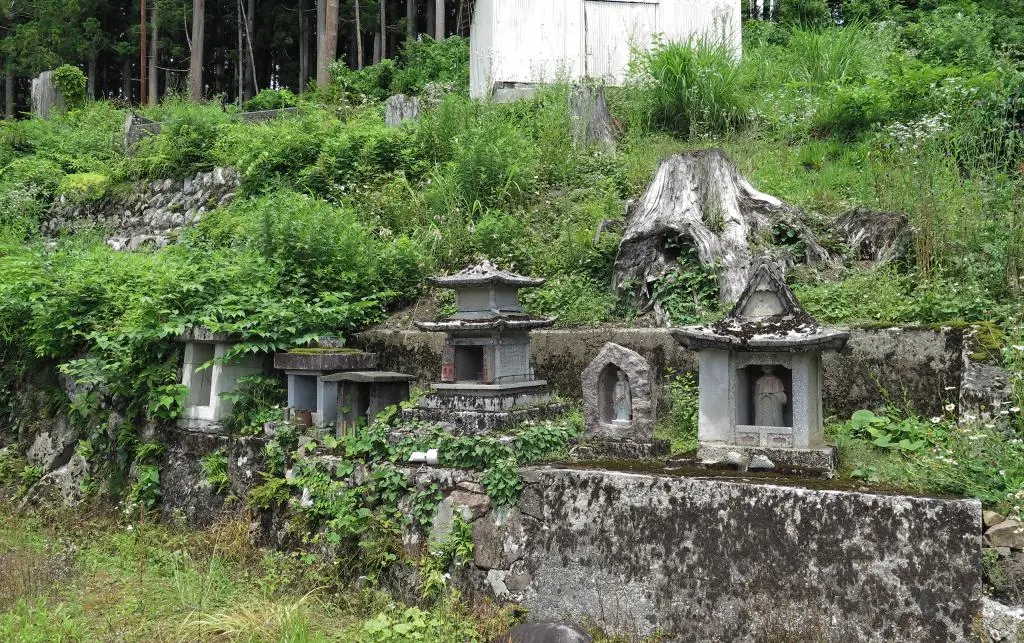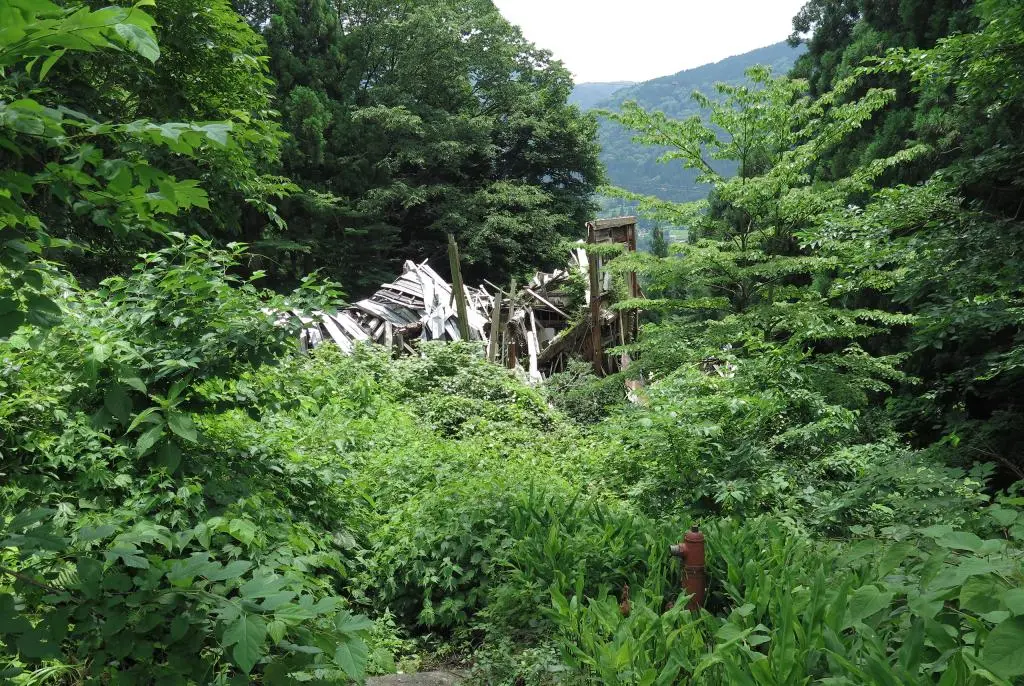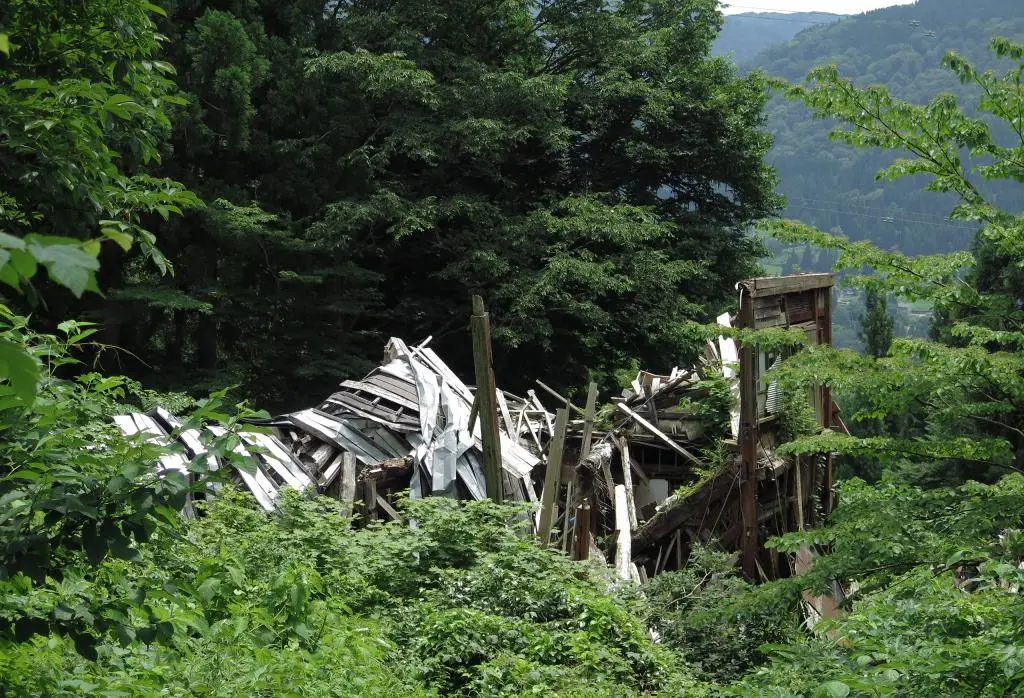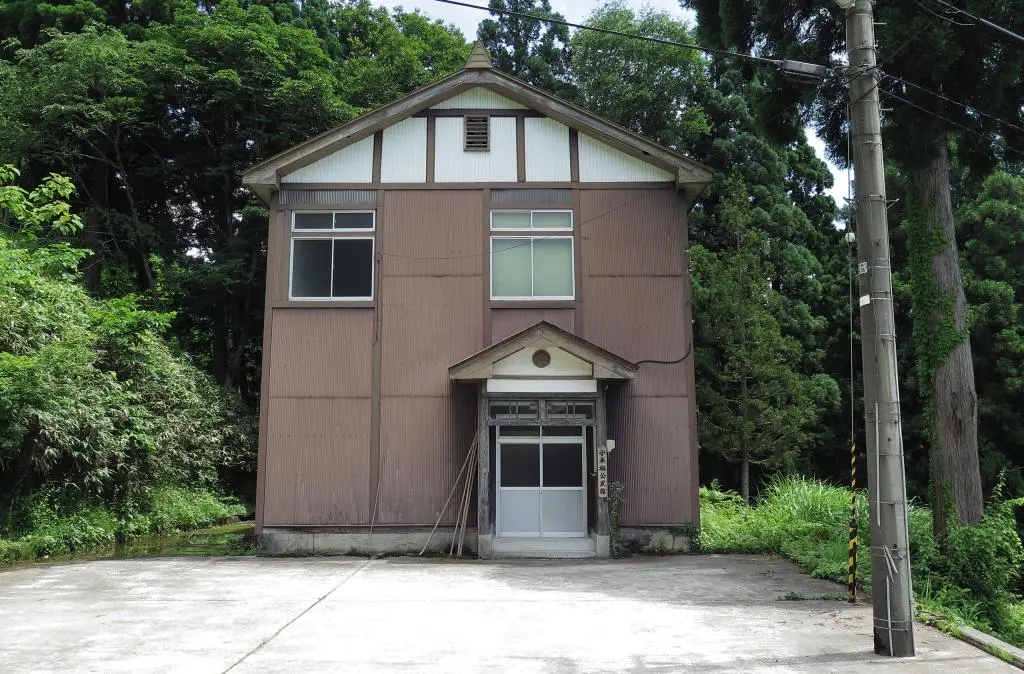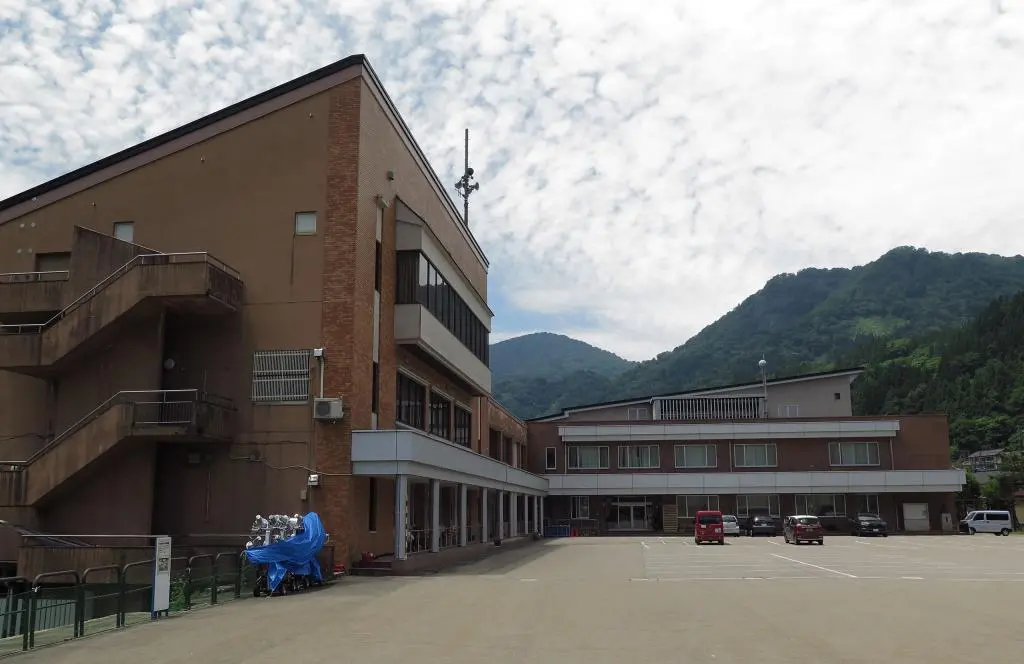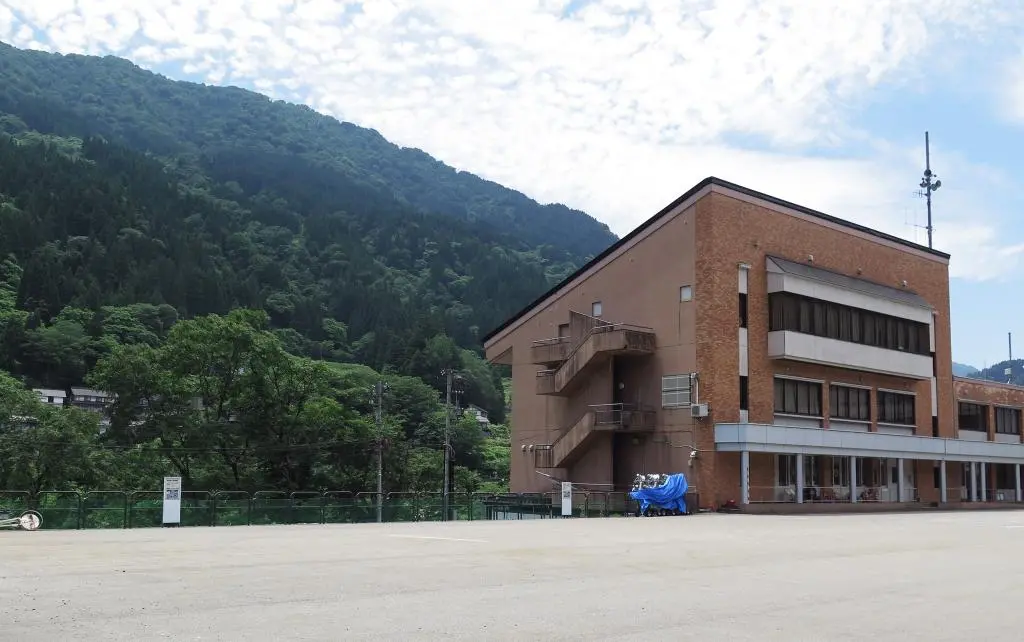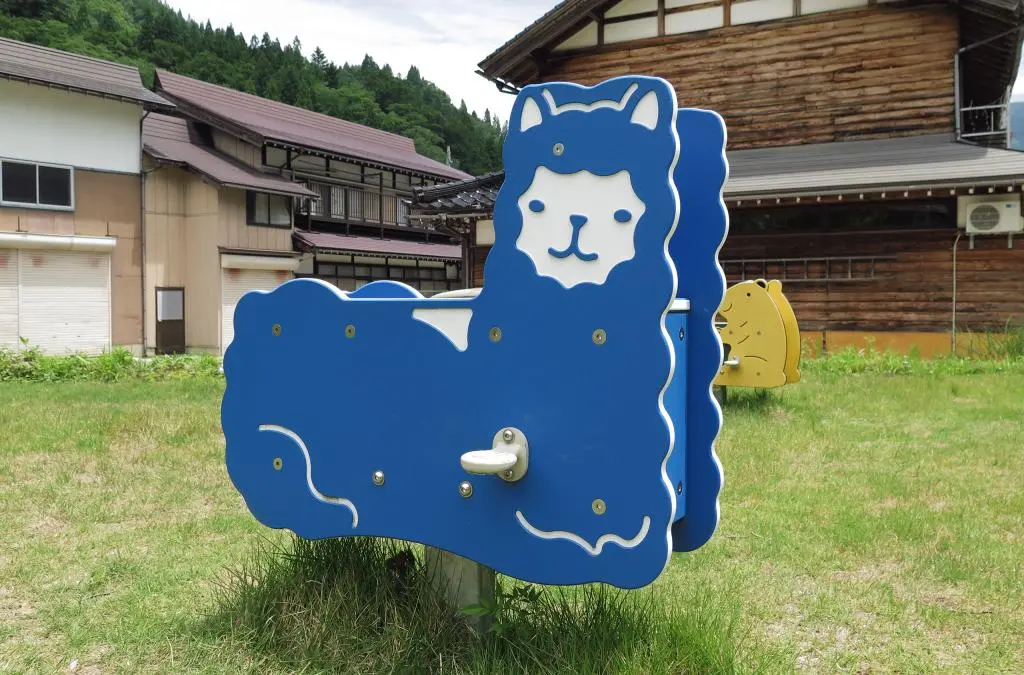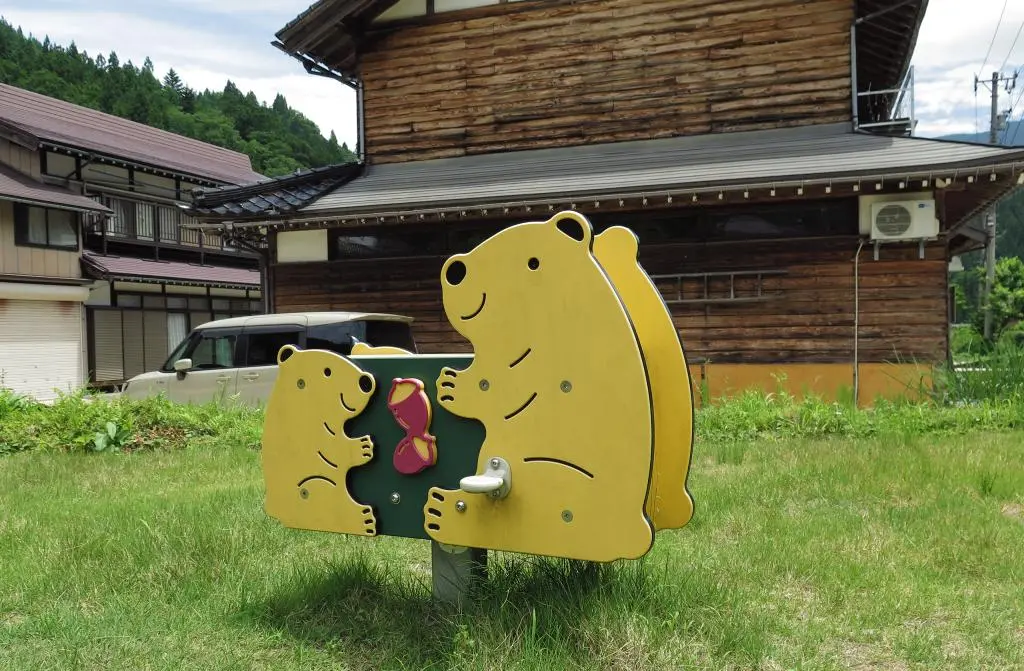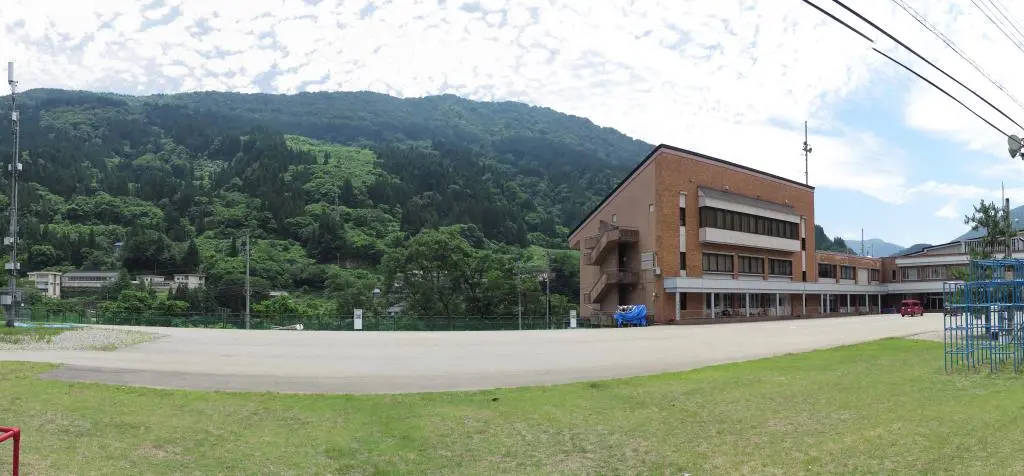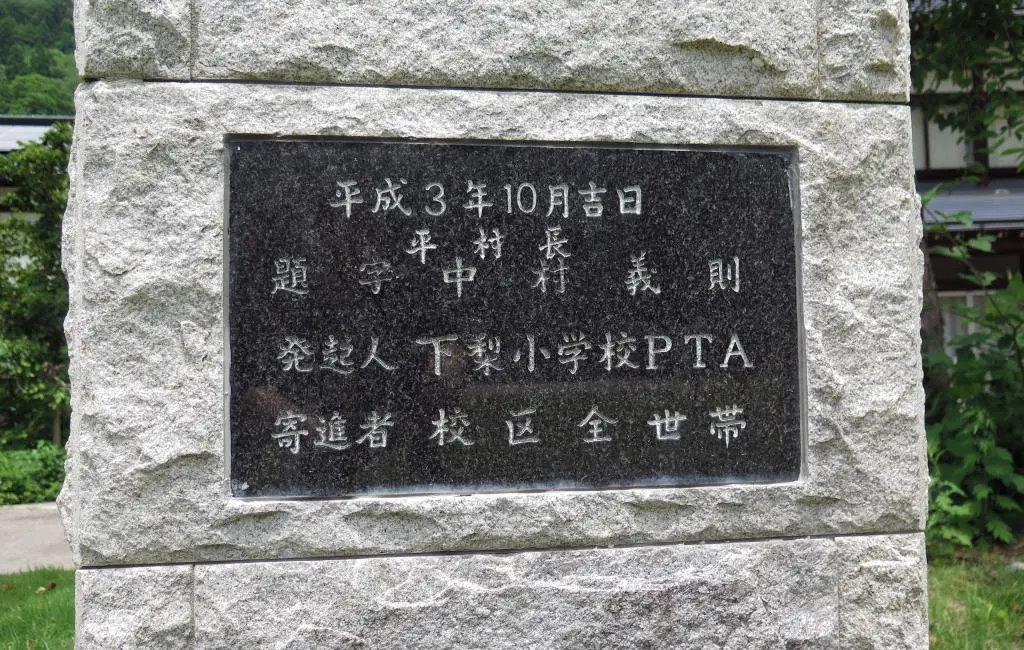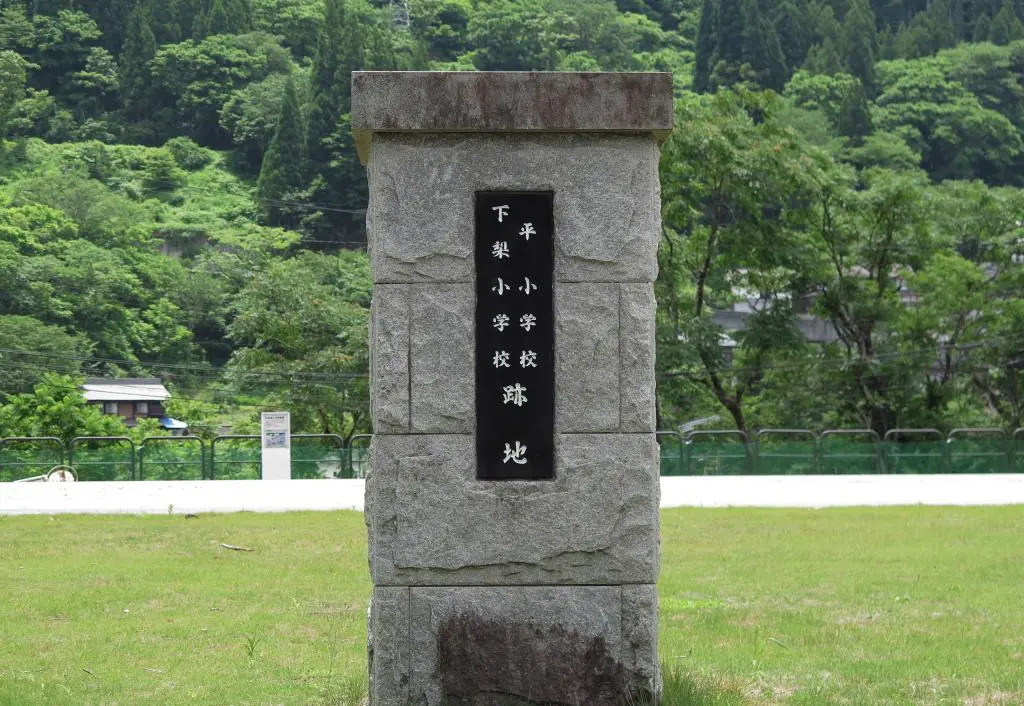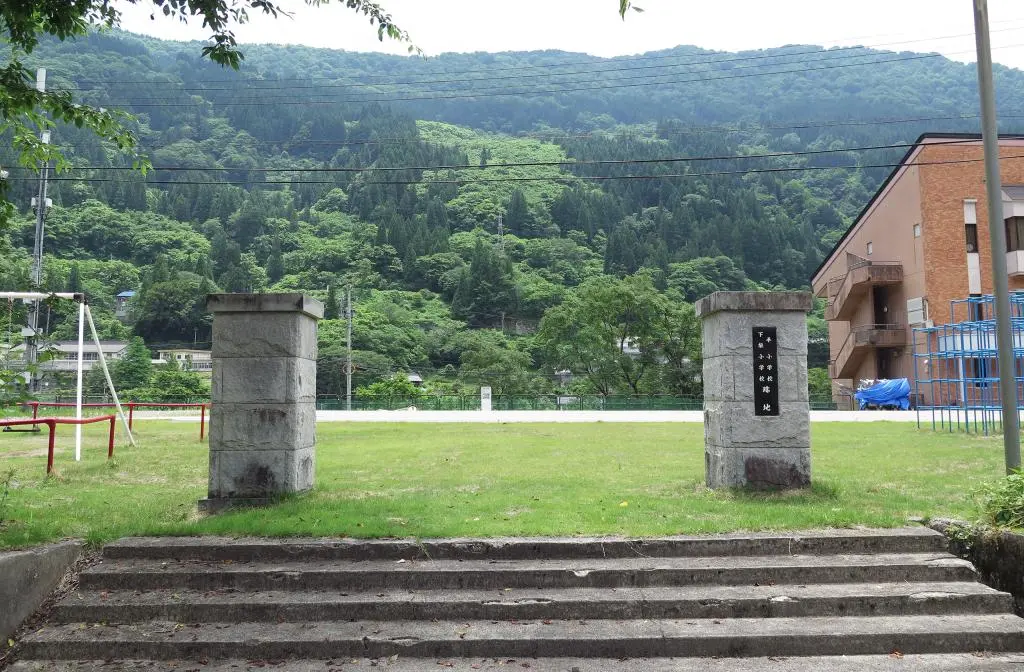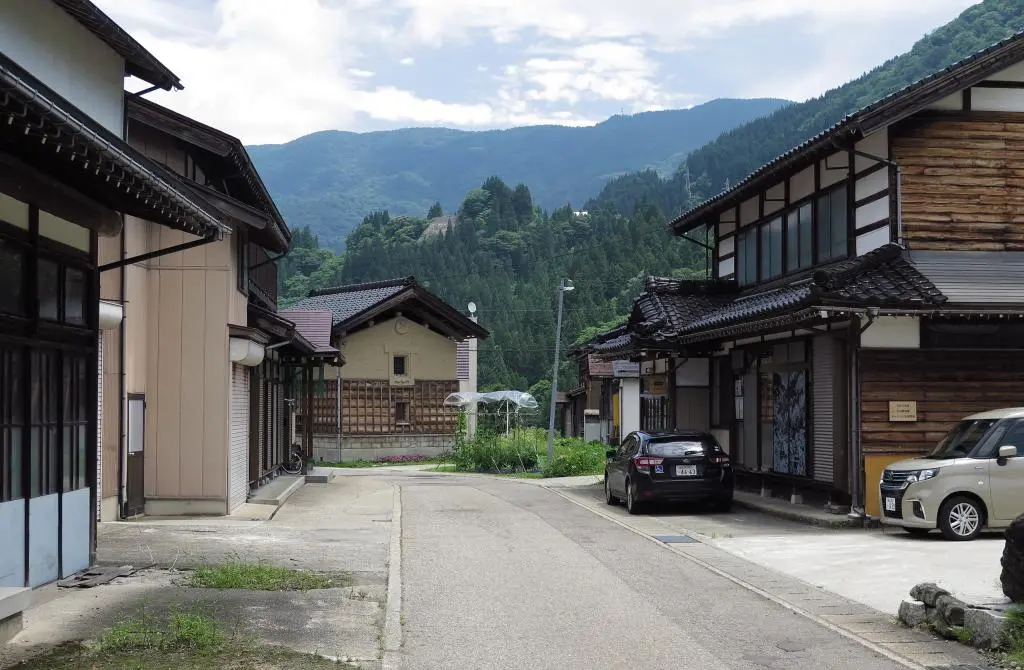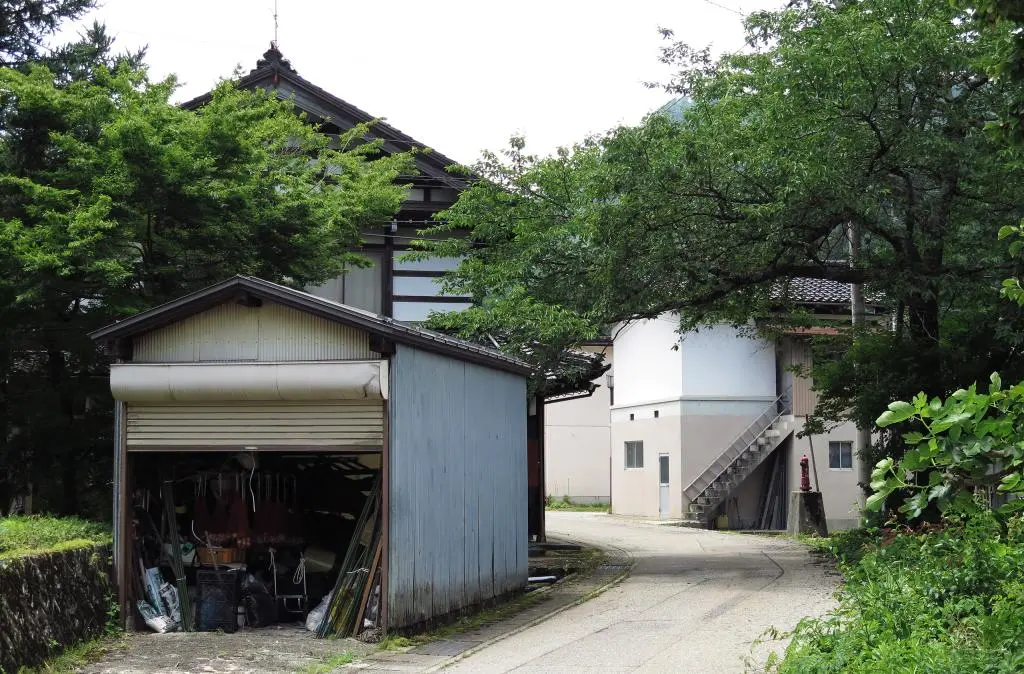This school's full name was the Taira Village Municipal Shimonashi Elementary Miune Branch School, or 平村立下梨小学校三嶺分校. At the time of its construction, there were two major elementary schools in the municipality of Taira Village, Shimonashi Elementary and Higashi Nakae Elementary. However, each one had plenty of branch schools that served as the students' actual day-to-day school. Students probably only went to the main school for the entrance ceremony and graduation.
I'm not sure when it opened, but it was closed in 1962 and all students went to Shimonashi Elementary. The branch school is located in the Kogurusu neighborhood 小来栖 directly north of downtown Shimonashi Village where Shimonashi Elementary was located.
These days its only a 5 minute drive, so it seems somewhat frivolous to have created a school so close. However, travel in Japan prior to the 60s was not so easy. The neighborhood is a somewhat decent climb from Shimonashi, and far too dangerous for a child to make the hike in winter. The village probably didn't have busses until the 1960s, so building a small school was easier. Even in Kogurusu, neighboring houses are at a pretty steep incline, so walking to school was still a challenge.
The school was featured in Toyama Prefecture's series showcasing the wooden schools of the past, and the old wooden building still exists today. It has been used pretty frequently as a community center for those living in the neighborhood since its closure as a school. Inside, in the entrance, are some commerative photos taken at neighborhood events. The most recent one was from 2016 for the Kogurusu Summer Festival 小来栖の夏祭り. The was the most recent thing I found inside the building.
The building is pretty small with only a few rooms on the first and second floors. The first room on the first floor was an open room with some tables and some other equipment. The room further back on the ground floor was also used for storage, however the floor had been eroded away leaving the dirt exposed. Going inside, bats started flying around the ceiling, so I didn't stay inside for long. I think this may have been the living quarters.
Upstairs was a much larger open room. Half of the room had Tatami, and the other half had the equipment used for their summer festival. On the wall near the doors, were some awards. In 1990 (Heisei 2), Taira Village apparently held a competition for morning exercises among the farming community. The Hanahikara (?) group はなひからの部 got first place, and their award was on the wall. The Koshihikari group コシヒカリの部 (koshihikari is a kind of rice) got second place.
On the wall facing the tatami mats was the Taira Village Town Charter 平村民憲章. It reads as follows:
わたくしにちは、五筒の美しい自然と香り高い文化遺産の伝承に誇りと責任ともち活力ある平村をめざしてこの憲章と定新ます。
We take pride in and responsibility for the beautiful nature of Gokayama, the fragrant cultural heritage of our village, and set out to create a vibrant village.
一、おたがいに信じあい励ましあって、住みよい村とつくります。
First, we will trust and encourage each other to create a pleasant village to live.
二、きびしい自然にうちから生産につとめて、豊かな村をつくります
Second, we will endevor to continue production in the harsh natural environment to create a rich village.
三、伝統を生かし文化と育てて、うるわしい村とつくります。
Third, we will make use of traditions and foster culture to create a beautiful village.
四、感謝の心をもち家族助けあって、むつまじい家とつくります
Fourth, we will be grateful and help each other as family members to create a harmonious community.
五、からだときにえ教養と高めて、たくましい人になります。
Five, we will improve our physical and cultural abilities to become strong people.
While many of the outer areas of Taira have been vacated from depopulation, the downtown area of Taira and the communities along the river still feel very vibrant. While driving around, I saw several tourists visiting the old Gasshou homes and going in and out of local stores.
However, times continue to change.
As transportation became stronger, and as more people moved away to cities, more and more branch schools closed and the students could join the main elementaries. By the 1990s, Taira village only had two elementary schools: Higashi Nakae Elementary School and Shimonashi Elementary School. In 1999, Higashi Nakae ES closed and students now attended Shimonashi, but it with the combination, the school was renamed to Taira Elementary School.
In 2004, Japan issued widespread municipal mergers across all the rurals areas of the country. The three separate Gokayama municipalities of Taira, Toga, and Kamitaira combined with five other villages to the west and north to create Nanto City. In 2006, Taira Elementary was closed and students traveled further down the road to Kamitaira Elementary. Perhaps as a trade-off, students of Kamitaira came to Taira for junior high school.
The old Taira Elementary School was turned into government offices, many of which focused on research for ground water and hydro electricity.
A few years ago, the building has been completely demolished. Now it serves as an emergency port for helicopter landings if any citizens need to extremely fast transport to a hospital in the city up north.
